How to grow chrysanthemums: expert tips on growing these garden classics
We give you the lowdown on how to grow chrysanthemums to keep those gorgeous flowers coming in waves of jewel-bright color
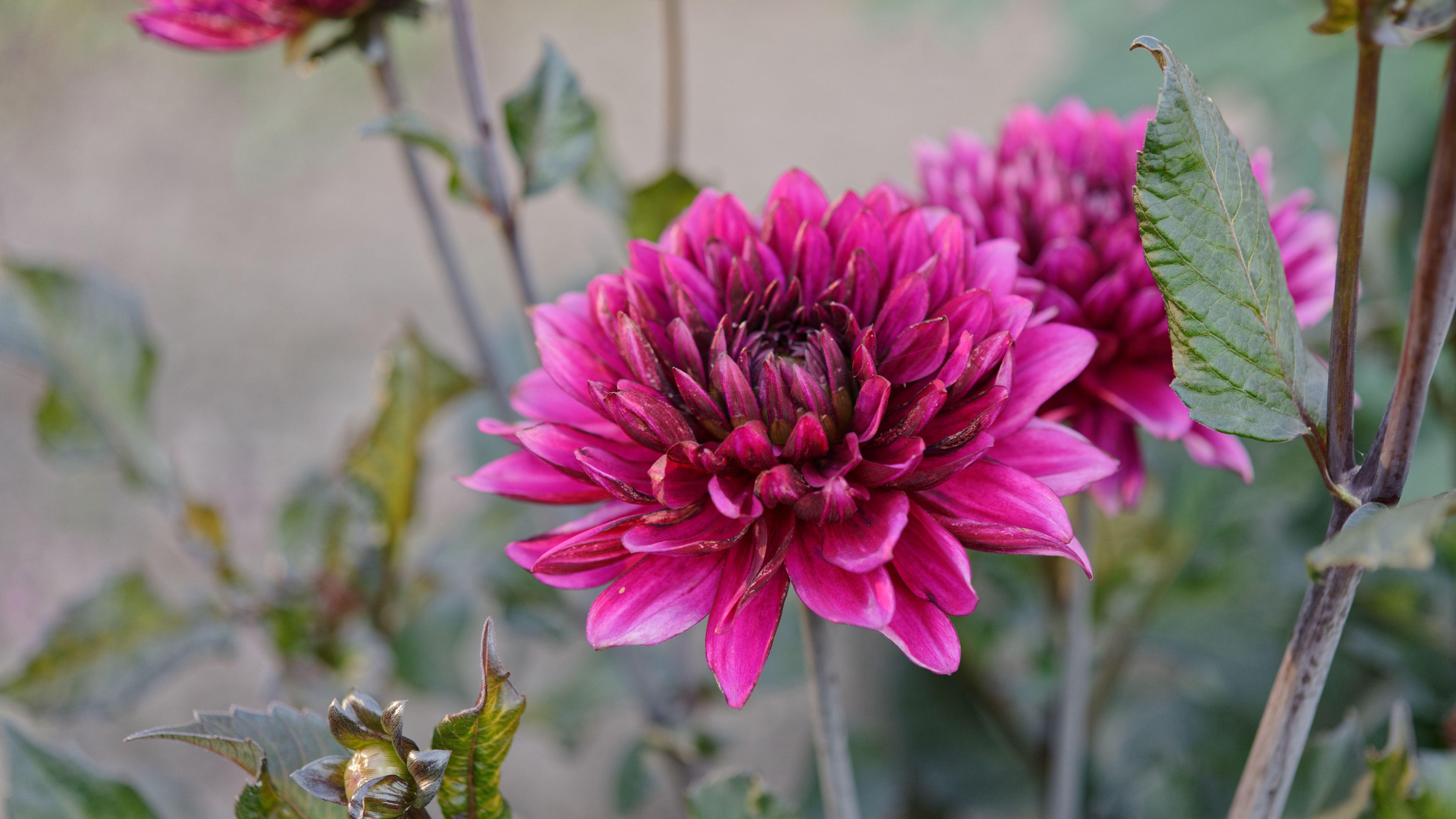
If you want to know how to grow chrysanthemums you’ve come to the right place. There are many varieties to choose from including single, double and large show blooms, as well as annual and perennial types. If this sounds confusing, keep reading to find out everything you need to know about how to grow them.
Chrysanthemums (nicknamed 'mums') come into their own as one of the best late-season flowers around. For pure elegance, nothing beats the shaggy pompom or spiky ‘spider’ varieties. These are popular right now with fashionable florists and are at the forefront of the chrysanthemum renaissance. On their tall slender stems they look great in the garden as well as the vase.
These bold blooms come in a range of fashionable colors including zesty lime, blush and café au lait that bear no relation to the cellophaned bouquets that give chrysanthemums a bad name. Focusing on just one color in your flowerbed ideas or vase maxes up their impact, but going for the pick and mix approach adds a certain pizazz too. They add a welcome splash when most other flowers are starting to fade.
There are many others to choose when it comes to how to grow chrysanthemums including the more sedate annual varieties with anemone and daisy like flowers.
Here’s how to grow chrysanthemums as well as care for them, and we'll also be introducing you to the rest of the chrysanthemum family including marguerites.
How to grow chrysanthemums: quick tips
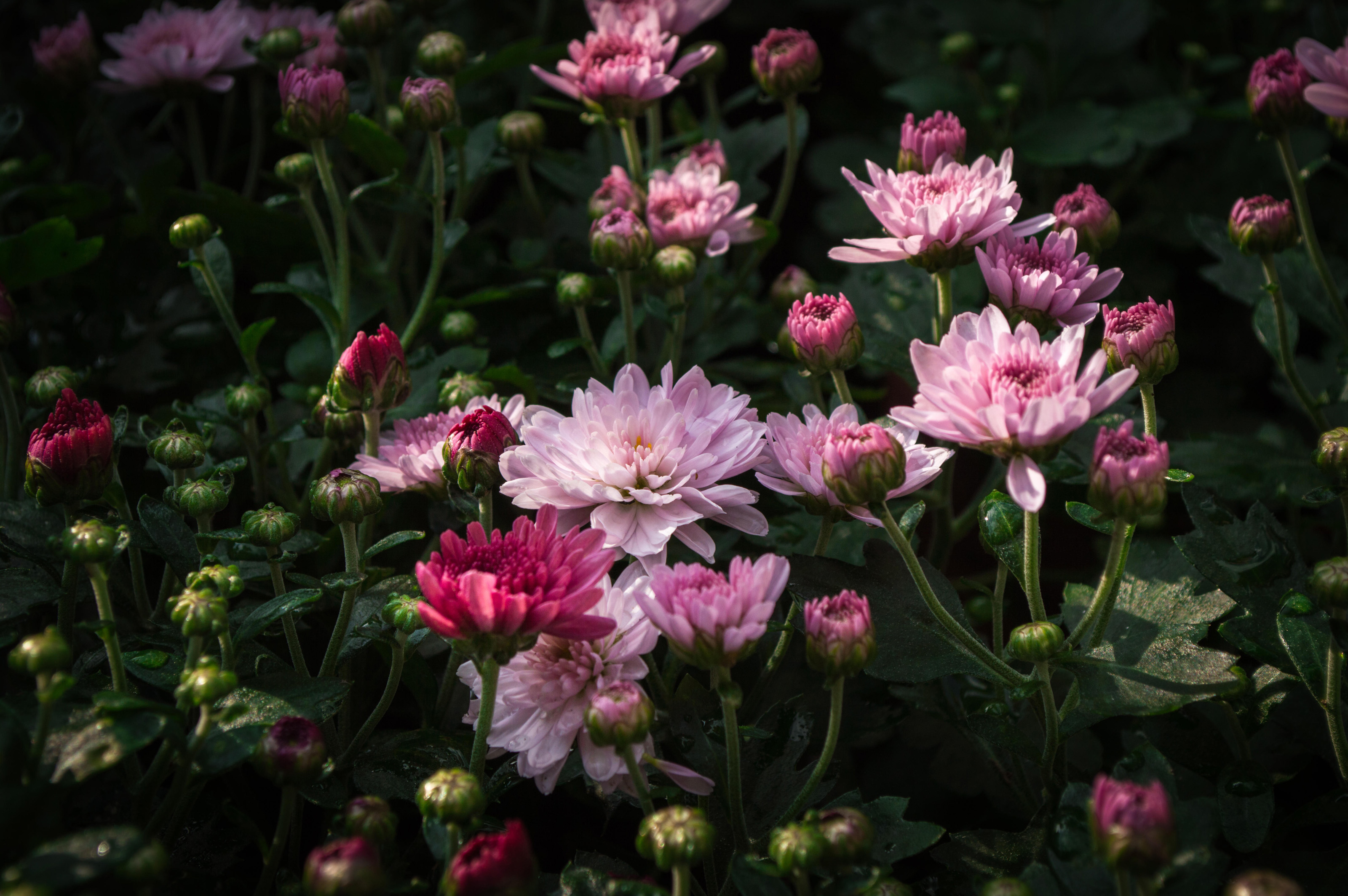
Follow these quick pointers for how to grow chrysanthemums and help your plants to thrive:
- There are lots of different varieties of chrysanthemums to choose from.
- Perennial chrysanthemums are either hardy or half-hardy, and can be grown in containers or in a border.
- You can also grow annual chrysanthemums, which are used in summer bedding displays.
- Some ways of growing them are easy, while others are more complicated.
- Rooted cuttings and small plants are widely available for potting on in summer.
- Plant out in April-May after all risk of frost has passed to get flowers from late August to October.
- Chrysanthemums love a sheltered sunny position.
- Water regularly to prevent the soil drying out.
- Taller chrysanthemums will need staking.
- Dwarf varieties work well in container gardening ideas.
- They make excellent cut flowers, especially the taller ones.
Where do chrysanthemums grow best?
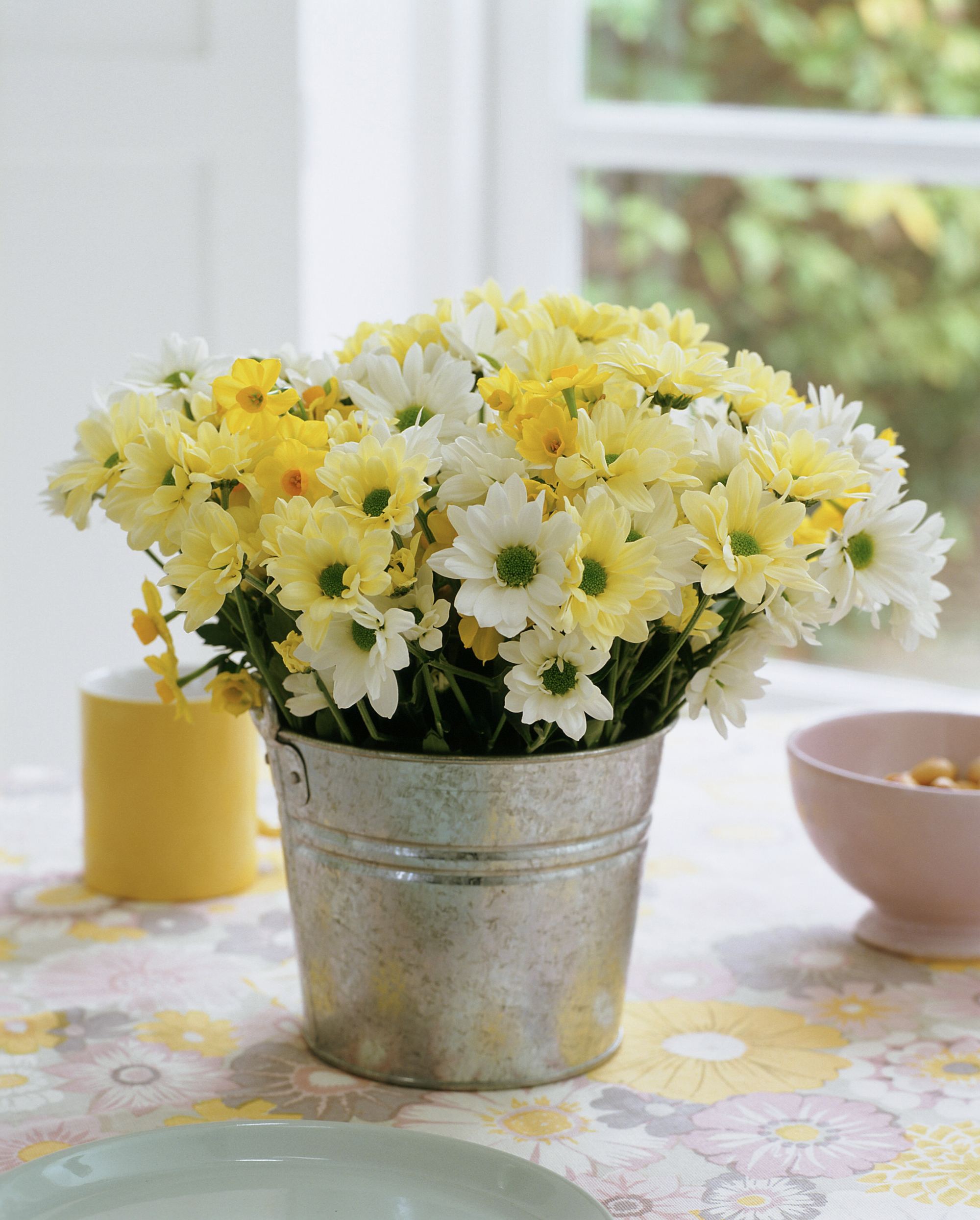
The trick to cracking how to grow chrysanthemums is finding the right spot in the garden for them. Whether you’re opting to fill a container with instant color or planting your chrysanthemums out in garden borders, they like an open position with lots of light. They will thrive in a sunny spot as long as you water them regularly to prevent the soil drying out so keep an eye on them during hot weather.
How do you grow perennial chrysanthemums?
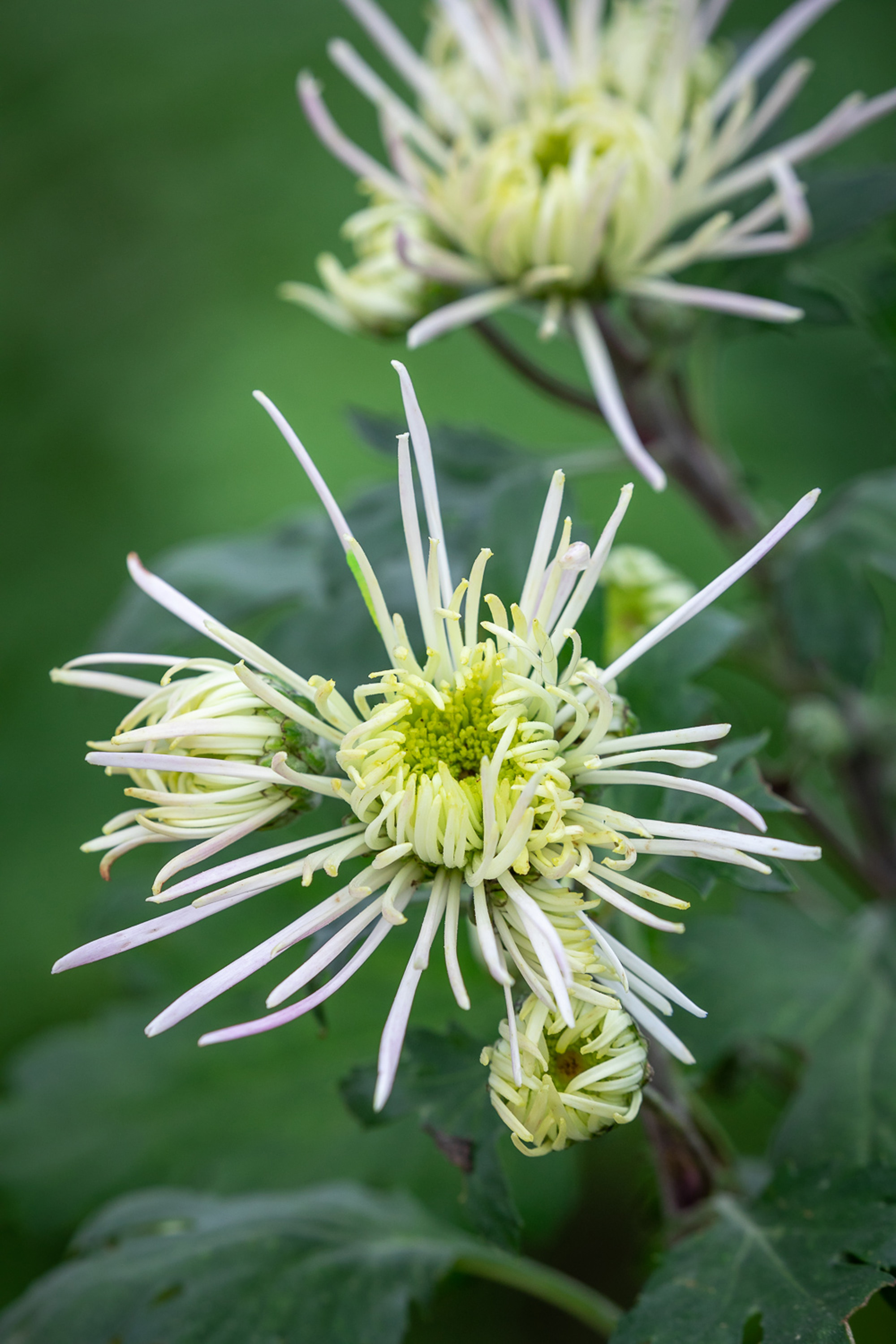
Perennial chrysanthemums flower year after year. They can be planted in borders and will bloom from late summer right into autumn. Choose hardy garden varieties that can be left in the ground all year round if you want a repeat performance.
Many varieties grow quite tall so choose a sheltered spot and you will also need to stake them to make sure they don’t get buffeted by autumn winds. Remember to check how tall your chosen plant will ultimately grow to and match the height of the stake accordingly. There are many dwarf cultivars available too for use in containers and borders.
If you buy rooted cuttings or potted on plants, keep them under cover before planting out. If this isn't possible due to space restrictions in your greenhouse ideas (or if you don't have a greenhouse), buy them just before you want to plant them out, after all risk of frost has passed.
What is an annual chrysanthemum?
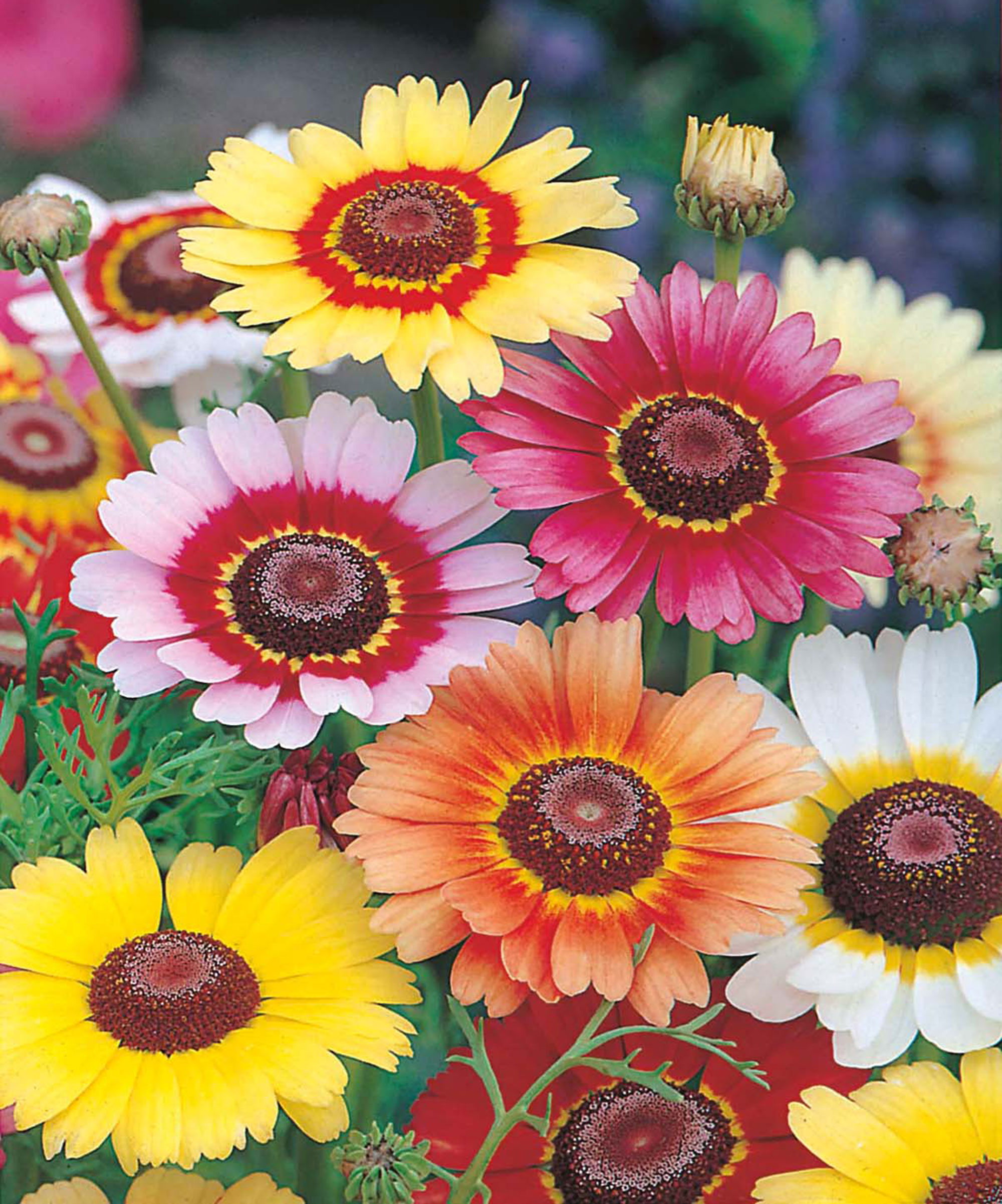
Annual chrysanthemums are mostly cheerful with lots of flowers, and often multicolored varieties.
They are different from chrysanthemums grown in the garden for autumn borders. Annual chrysanthemums are often discarded when the blooms fade as they won’t make it through winter.
How to grow annual chrysanthemums from seed
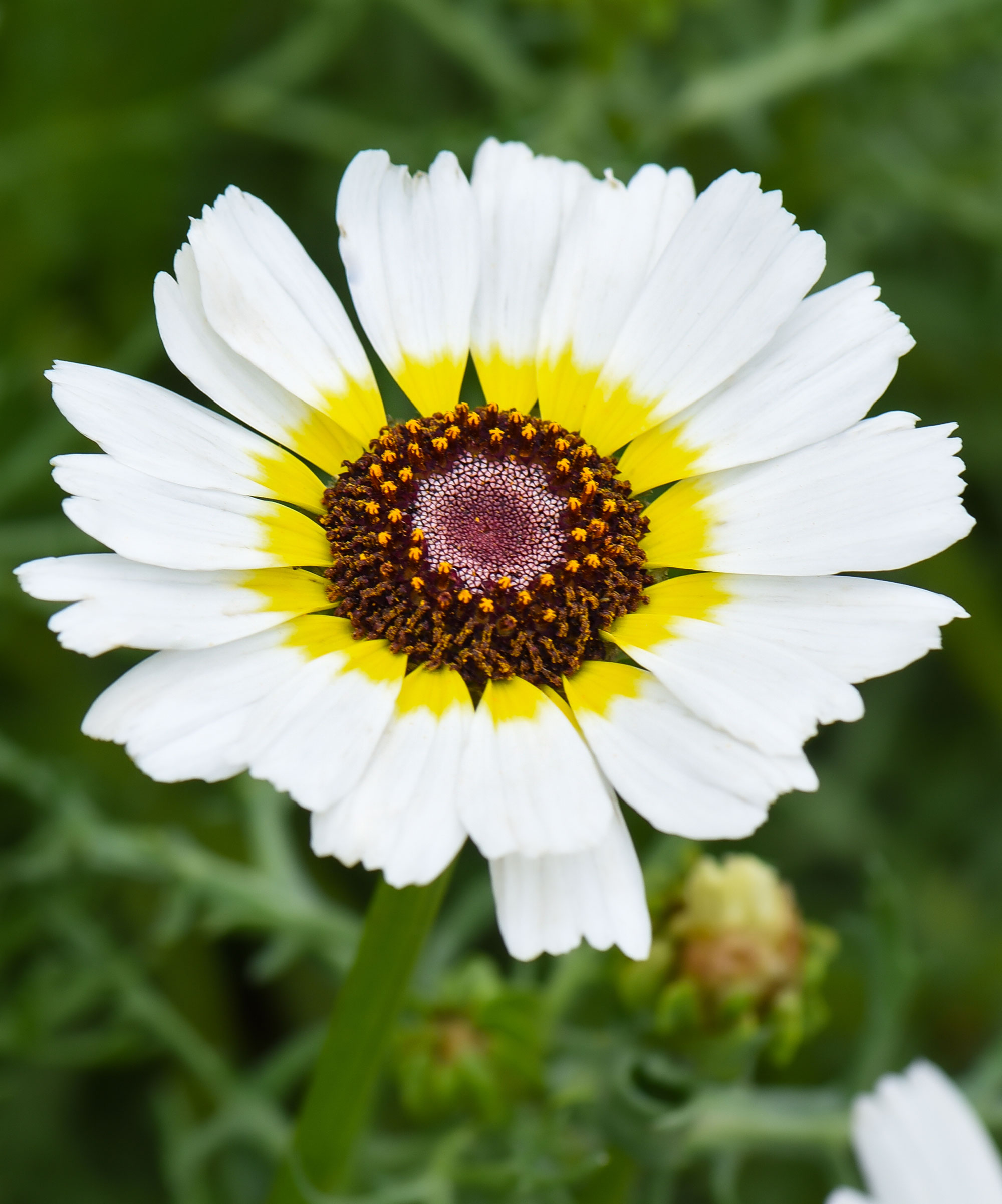
- Sow the seeds in spring or in warmer climates you can sow them in autumn.
- Sow seeds thinly where you’d like the plants to flower.
- Don't let the soil dry out but keep it well sprinkled.
- When the seedlings sprout, thin to at least 23cm between them. You can transplant or give away any spares. Find out how to transplant seedlings in our guide.
- Use brushwood twigs or pea-and-bean netting stretched horizontally as support. This is necessary as these can grow into top heavy plants and may snap in high winds.
How to plant chrysanthemums

Pot on rooted cuttings and small plants bought online or from nurseries into individual 7-10cm pots, then pot on again once the plants are sturdy. Keep them under cover if you have a greenhouse or coldframe.
Plant outdoors only when you're sure all risk of frost has passed. Choose a sheltered, sunny spot and make sure the soil is moist but well-drained with plenty of organic matter dug in including a good scoop at the bottom of the planting hole.
Late-flowering chrysanthemums should be potted into a loam-based compost and grown in a sunny spot outdoors in summer. In late summer move plants to a cool room in the house and wait for flowers to open. Make sure the compost stays moist. After planting, water generously for 1-2 weeks until the plants are established.
You can find out plenty of tips on how to compost in our guide.
How to care for chrysanthemums
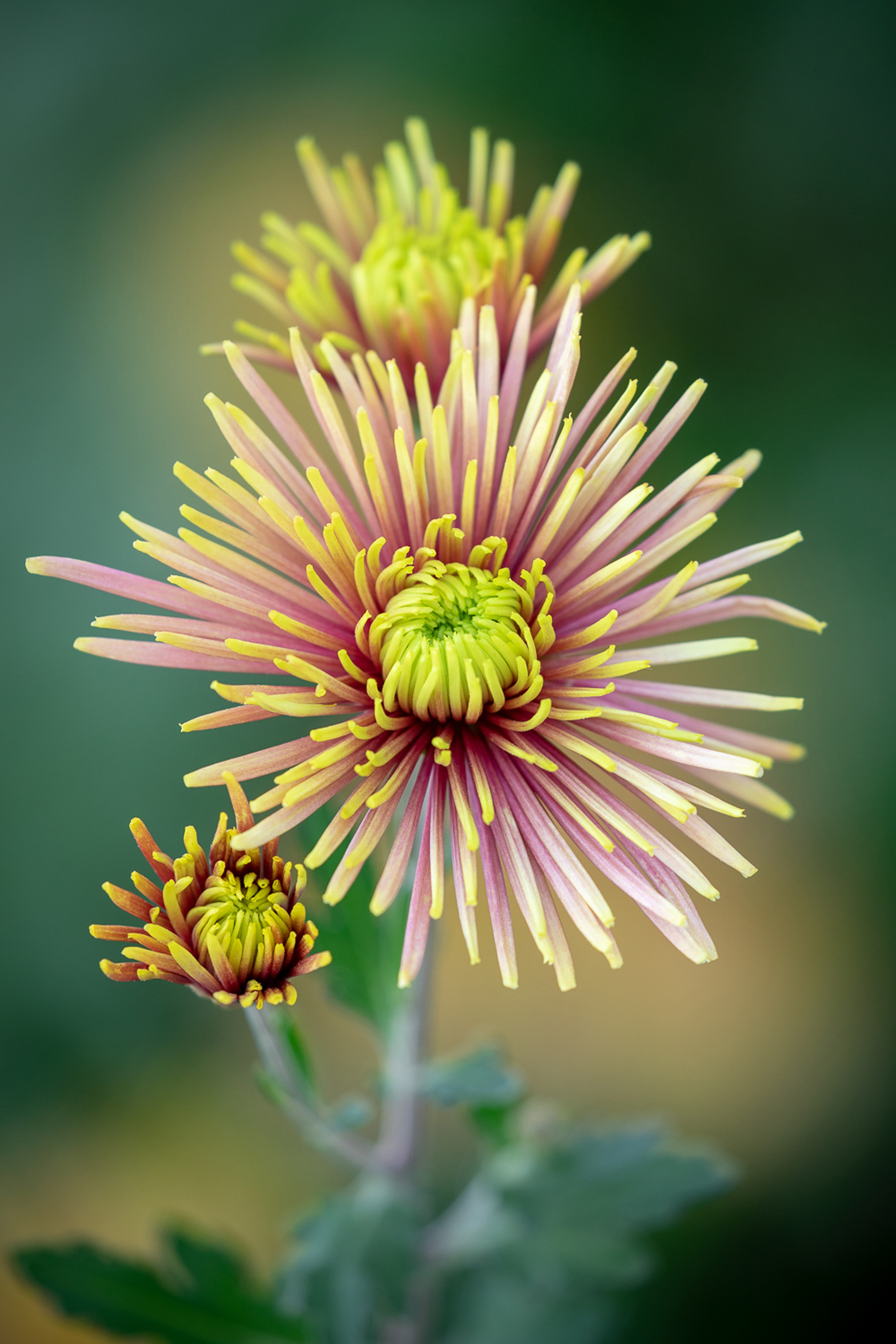
When it comes to how to grow chrysanthemums, there are a few things to remember to make sure you care for your plants properly.
The great thing about annual chrysanthemums is that once they're in the ground there's very little you need to do in terms of maintenance.
Just make sure you dead-head your chrysanthemum plants regularly. It makes a big difference to the length of the flowering season and should see you getting a new flush of blooms right through autumn.
When spray chrysanthemums reach about 20cm in height, pinch out the growing tip. This will encourage them to bush out and you'll get more blooms.
Water regularly in summer and feed container-grown plants with a liquid fertilizer from late spring. Apply a liquid fertilizer every two weeks until the flower buds appear.
Do chrysanthemums come back year after year?
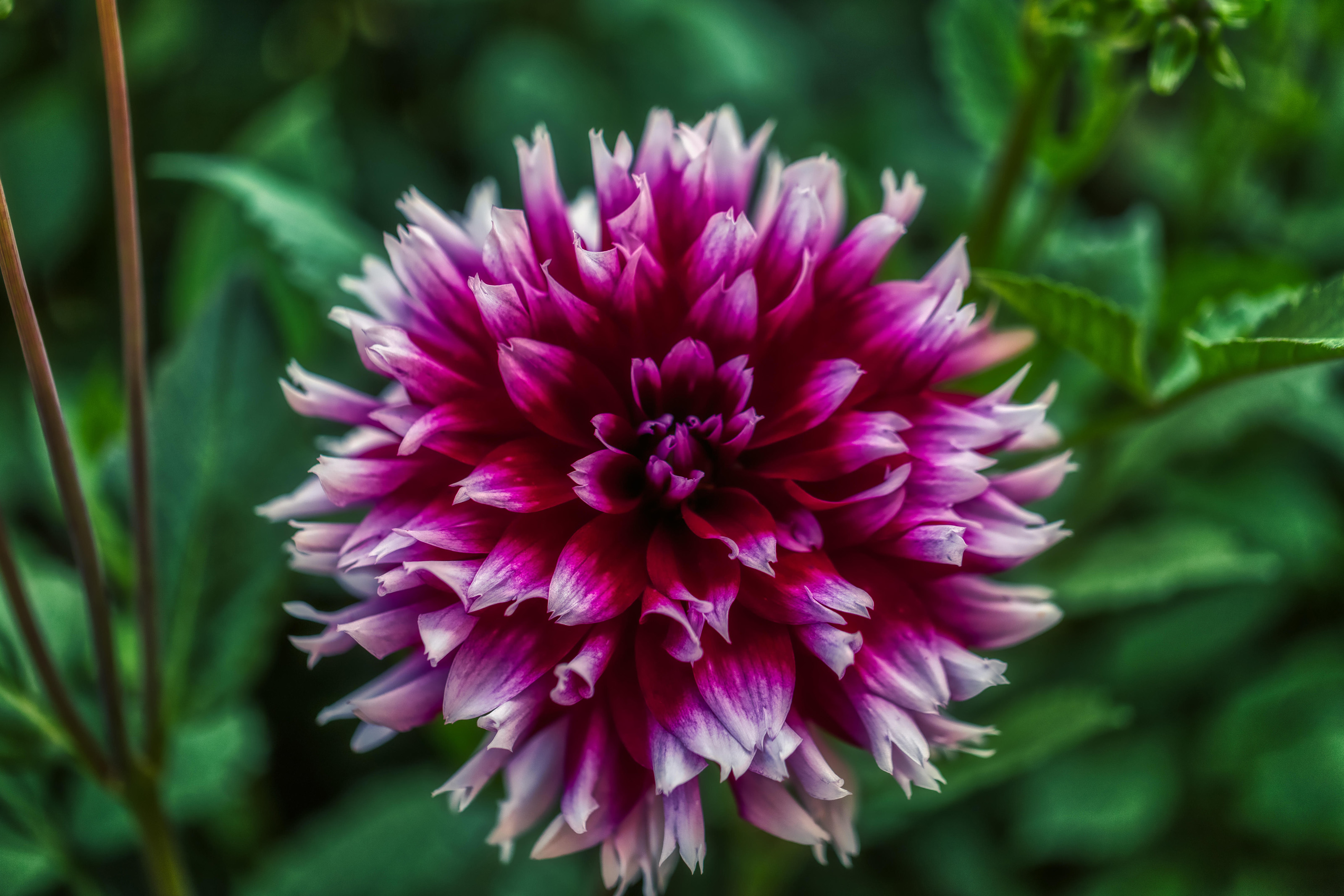
It depends on the variety of chrysanthemum you're growing. The annual ones are usually discarded when the blooms fade in autumn as they won’t make it through winter.
Perennial varieties can be grown outside all year round in mild areas. Cut them back as soon as they finish flowering to let in light and air around the base of the plant and encourage new growth. It will also help deter slugs and mildew. There's more tips on how to get rid of slugs in our guide.
If you live in a cooler climate your plants will need to be dug up and overwintered to protect them from harsh and wet weather. Lift them from the middle of autumn onwards, but be guided by what's happening weather-wise. Definitely try to do it before the heavy autumn rain or first frosts.
Will chrysanthemums survive winter?
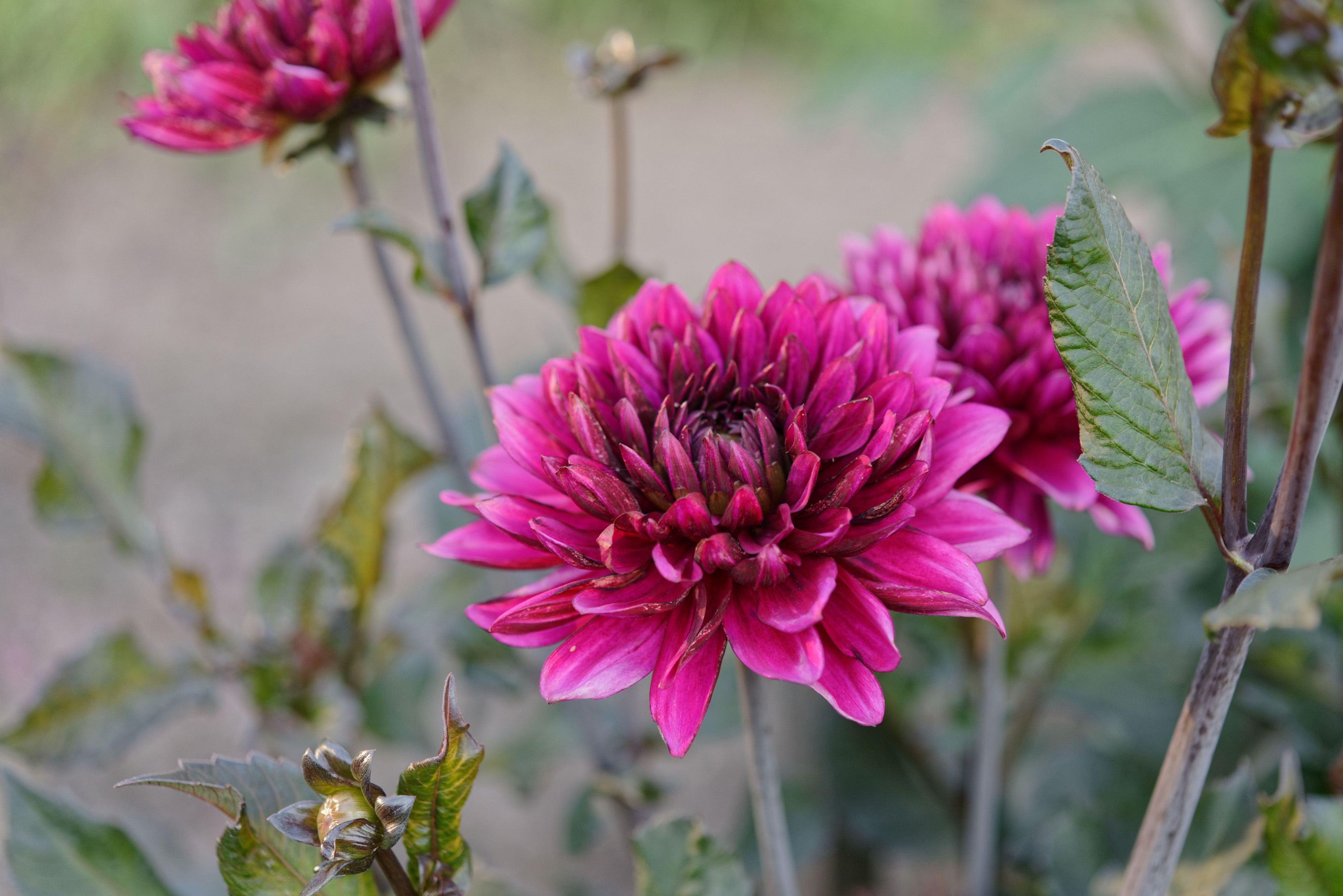
In sheltered gardens half-hardy, early-flowering chrysanthemums can be cut back to the ground in autumn and left to overwinter in the garden. If you're not sure it's probably best to lift the plants and transfer them to a spot that's under cover. Despite them being tough plants this removes them from the damp conditions and slugs that may linger in the winter soil and gives you the opportunity to regenerate your plants.
You can try replanting them in the greenhouse where they will carry on flowering. You may be lucky and find that you still have blooms at Christmas.
The alternative is to cut them back to store over winter. Once they've finished flowering and you've cut them down transfer to a frost-free place. The roots should start shooting again in spring and you can then transfer them back to the garden as one of your spring garden jobs.
How to propagate chrysanthemums
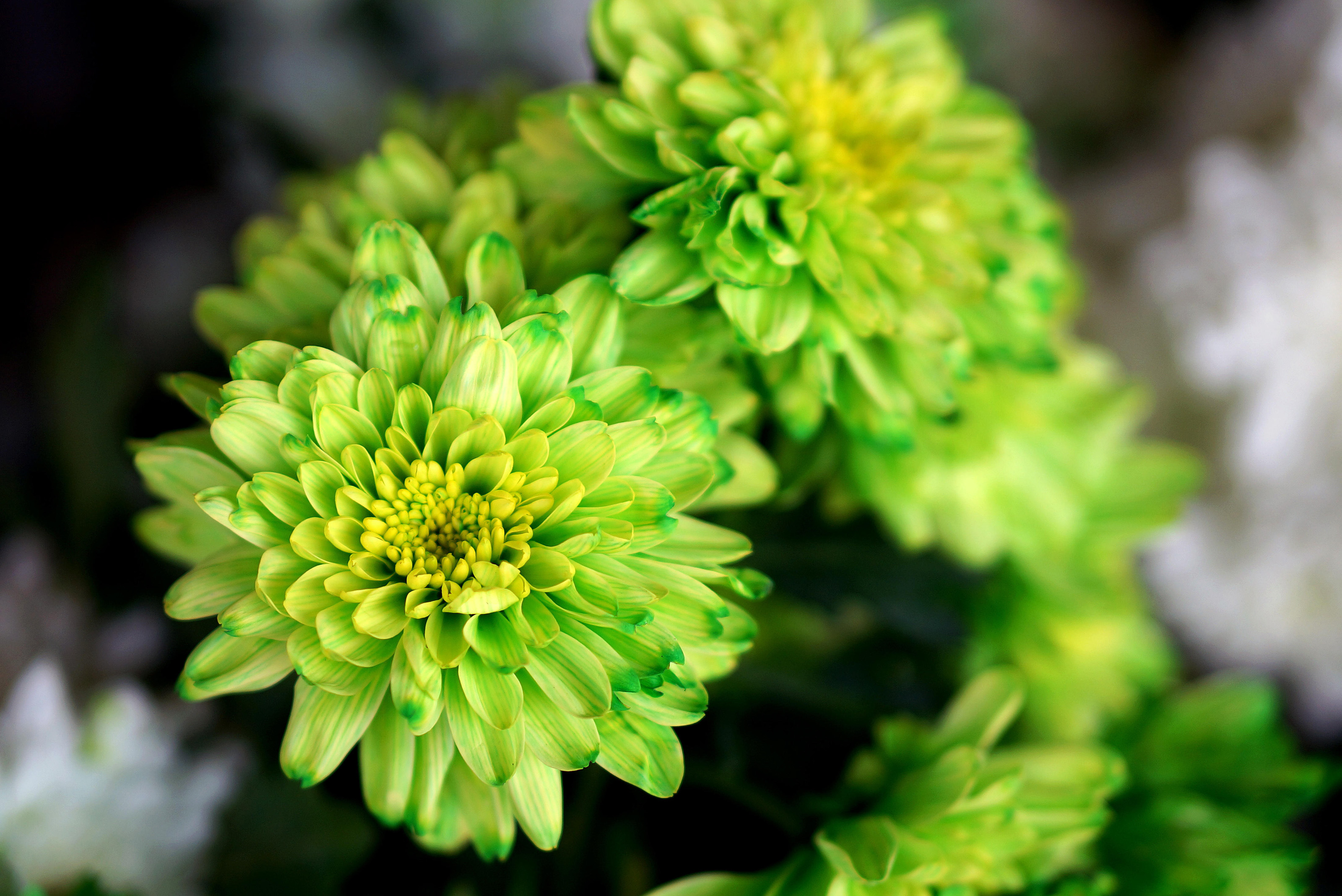
- Once you've learned how to grow chrysanthemums, you can then take cuttings in spring when you see the healthy new shoots starting to appear at the base of the stems. This can be any time from January to April. Our guide on how to take cuttings has more tips.
- Choose healthy looking side shoots that are firm and strong enough to handle.
- Hold a section between your finger and thumb. Using a sharp knife cut the shoot off at the base.
- Insert into seed trays filled with moist cutting compost.
- Place in a propagator or cover with a clear plastic bag and keep in a light, warm place.
- When you see good signs of growth remove the bag and pot up individually in John Innes No 1 compost for growing on in a cool greenhouse or cold frame.
Do chrysanthemums make good cut flowers?
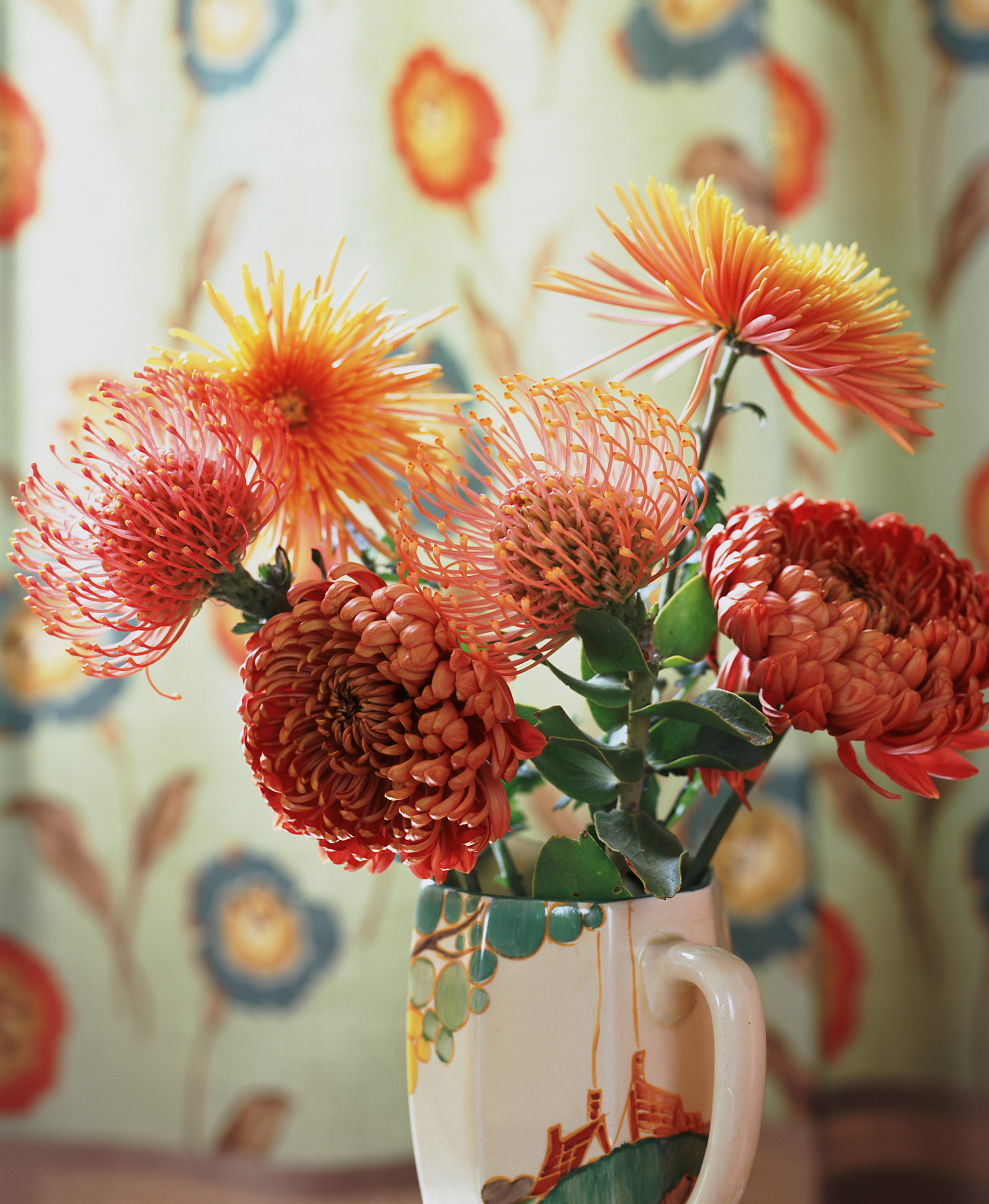
One of the main benefits of learning how to grow chrysanthemums is that they make excellent cut flowers. Cut some chrysanthemums from the garden and arrange them in a vase and they will still be going strong a week later – sometimes two or three weeks later depending on the variety. They are one of the best cutting garden flowers to choose if you want to establish your own cutting garden to fill your house with free blooms.
Long after other blooms have faded, chrysanthemums remain fresh and perky in the vase. Just remember when you arrange them to make sure there are no leaves touching the water and cut the stems cleanly. They can be spruced up later by adding a few new stems to your arrangement.
What about the extended chrysanthemum family?
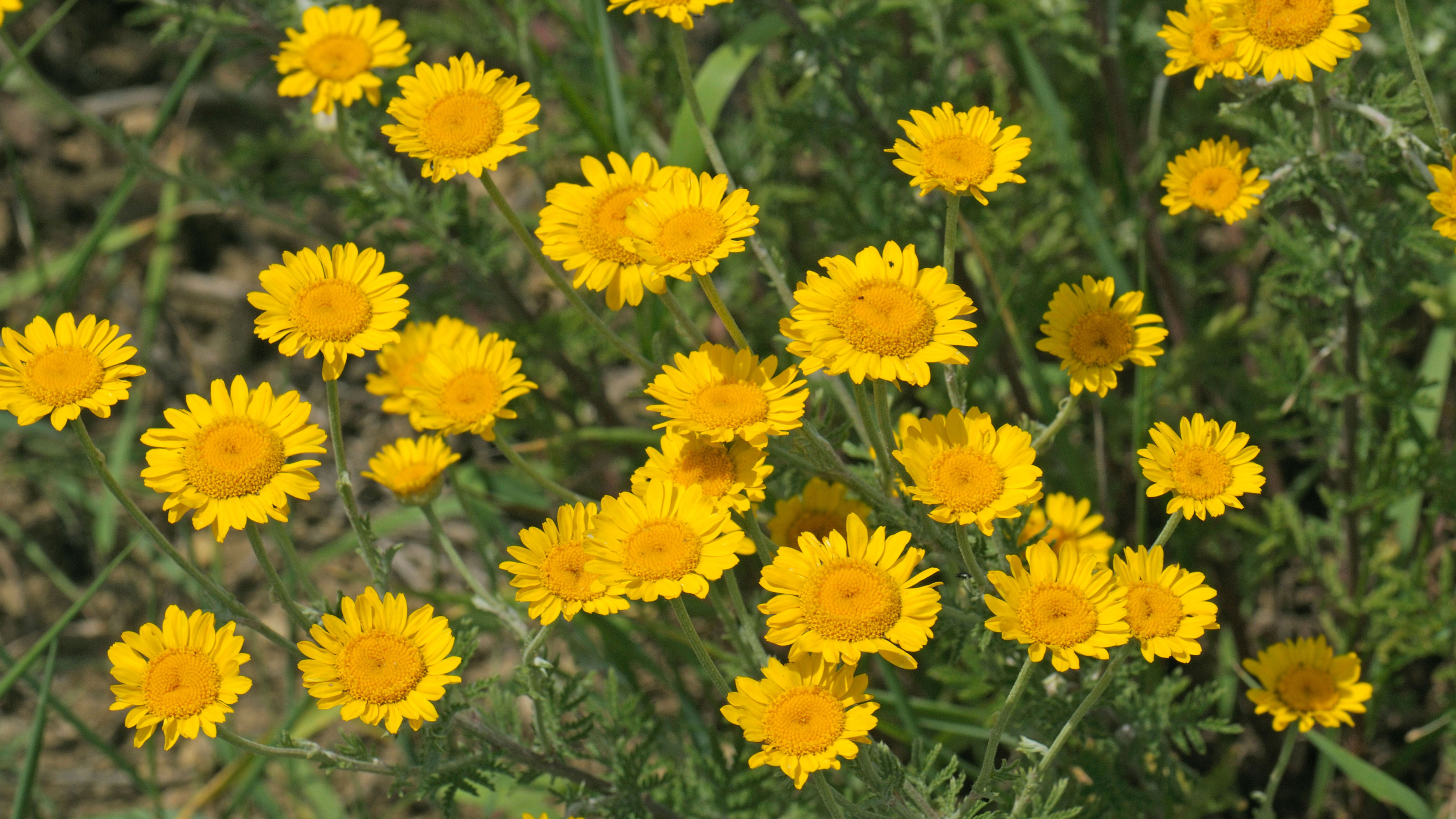
Where do we start? These include shasta daisies, feverfew, pyrethrum and marguerites. It can be confusing, especially as they all have flowers like daisies. Keep reading to find out our recommendations for what to look out for and where to buy the whole chrysanthemum family.
Where to buy chrysanthemums
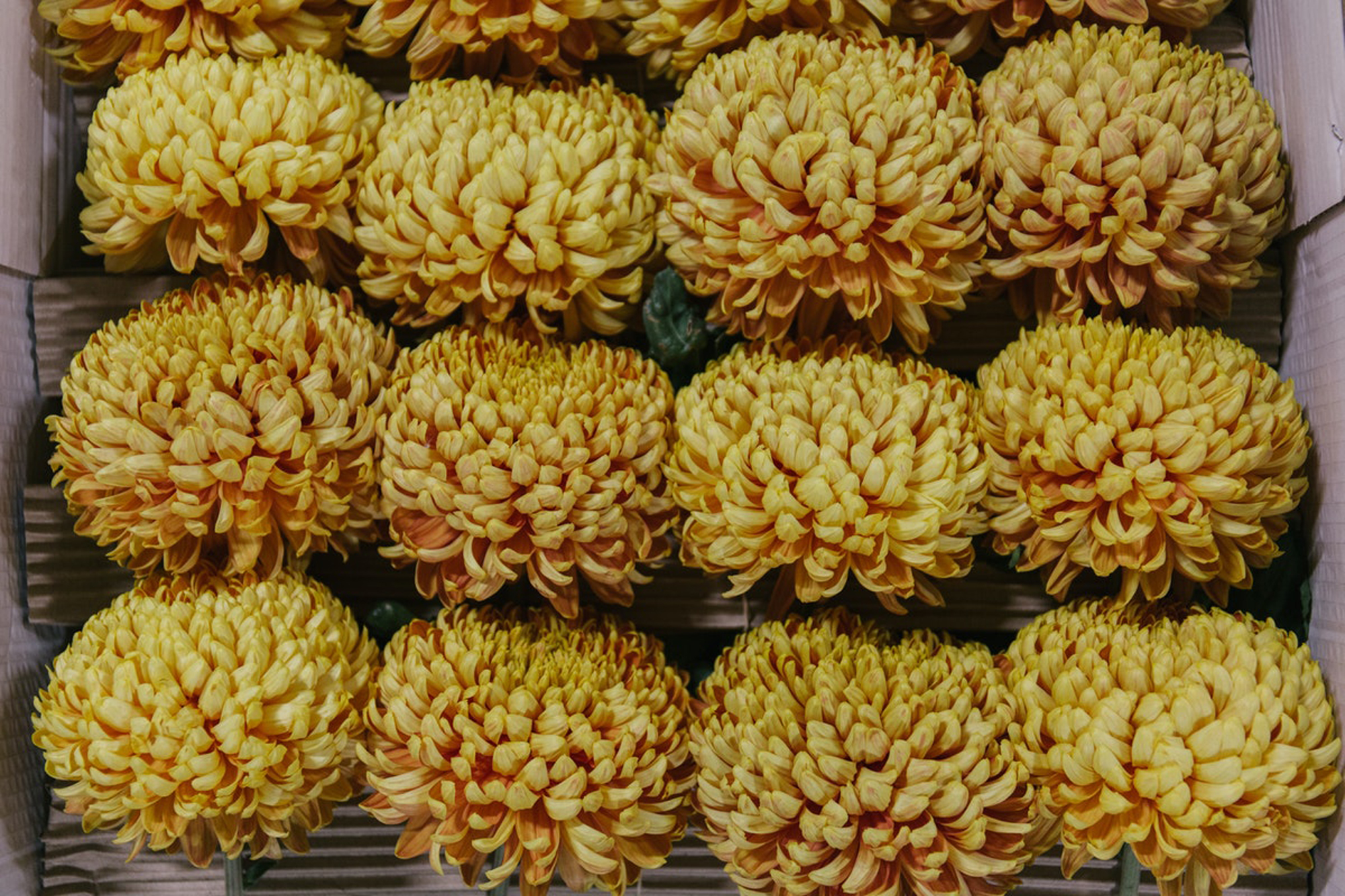
Read our tips on how to grow chrysanthemums and want to include them in your planting scheme? You can buy them as seeds, young plug plants or larger plants from the garden center or online. Shop chrysanthemums at the below suppliers, or keep scrolling for some of our favorite picks.
Where to buy chrysanthemums in the UK
- Shop chrysanthemums at Amazon
- Shop chrysanthemums at Crocus
- Shop chrysanthemums at Dobies
- Shop chrysanthemums at Sarah Raven
- Shop chrysanthemums at Suttons
- Shop chrysanthemums at Thompson & Morgan
- Shop chrysanthemums at Waitrose Garden
- Shop chrysanthemums at You Garden
Where to buy chrysanthemums in the US
- Shop chrysanthemums at Amazon
- Shop chrysanthemums at Burpee
- Shop chrysanthemums at Home Depot
- Shop chrysanthemums at Walmart
6 annual chrysanthemums to try growing in your garden
1. Cockade
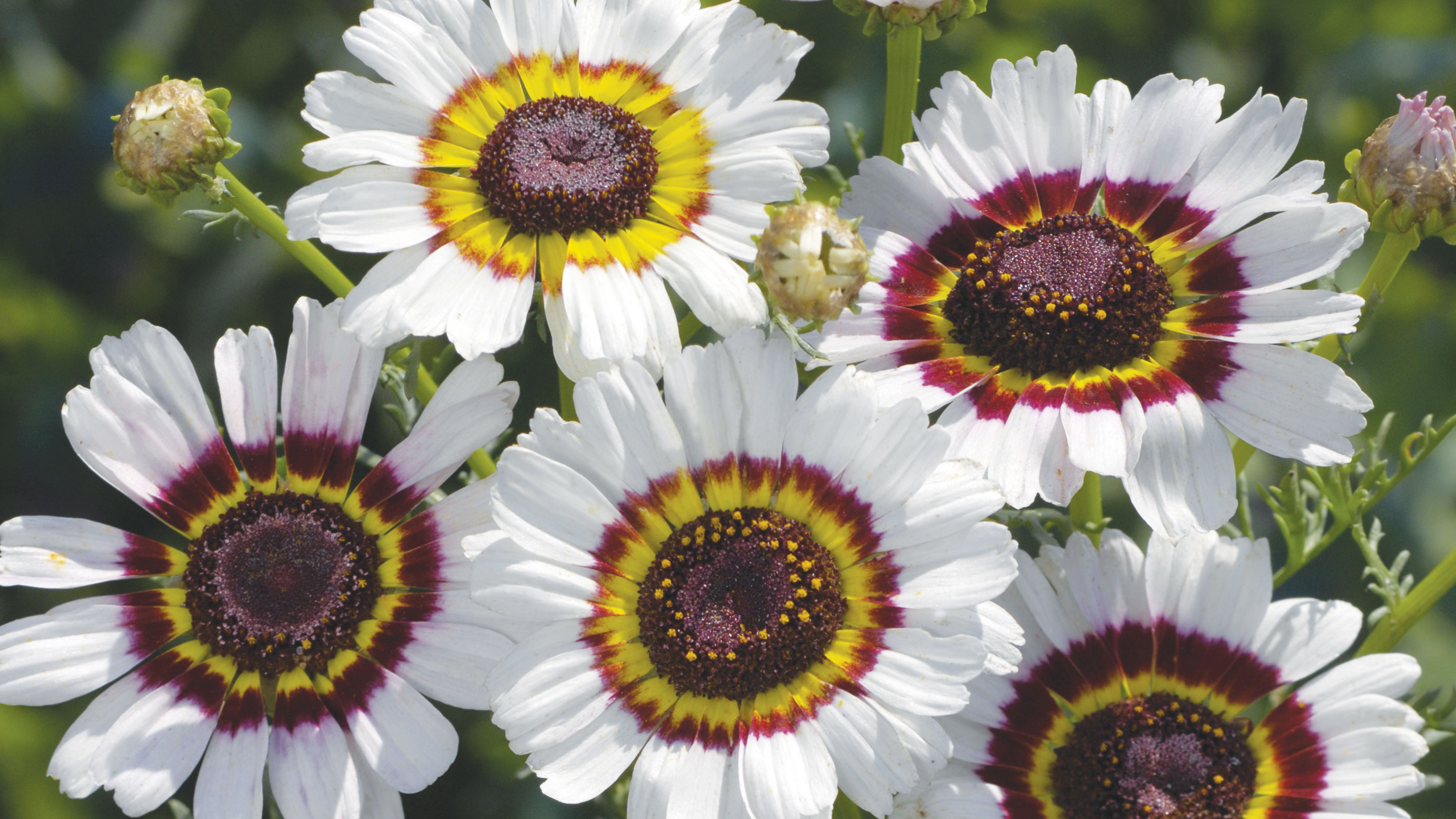
Single, daisy-like flowers feature tightly packed white petals, each with a rich purple band around a slim yellow ring, and all surrounding a deep purple eye. Very bright and cheerful. Height: 70cm.
2. Dunnetti
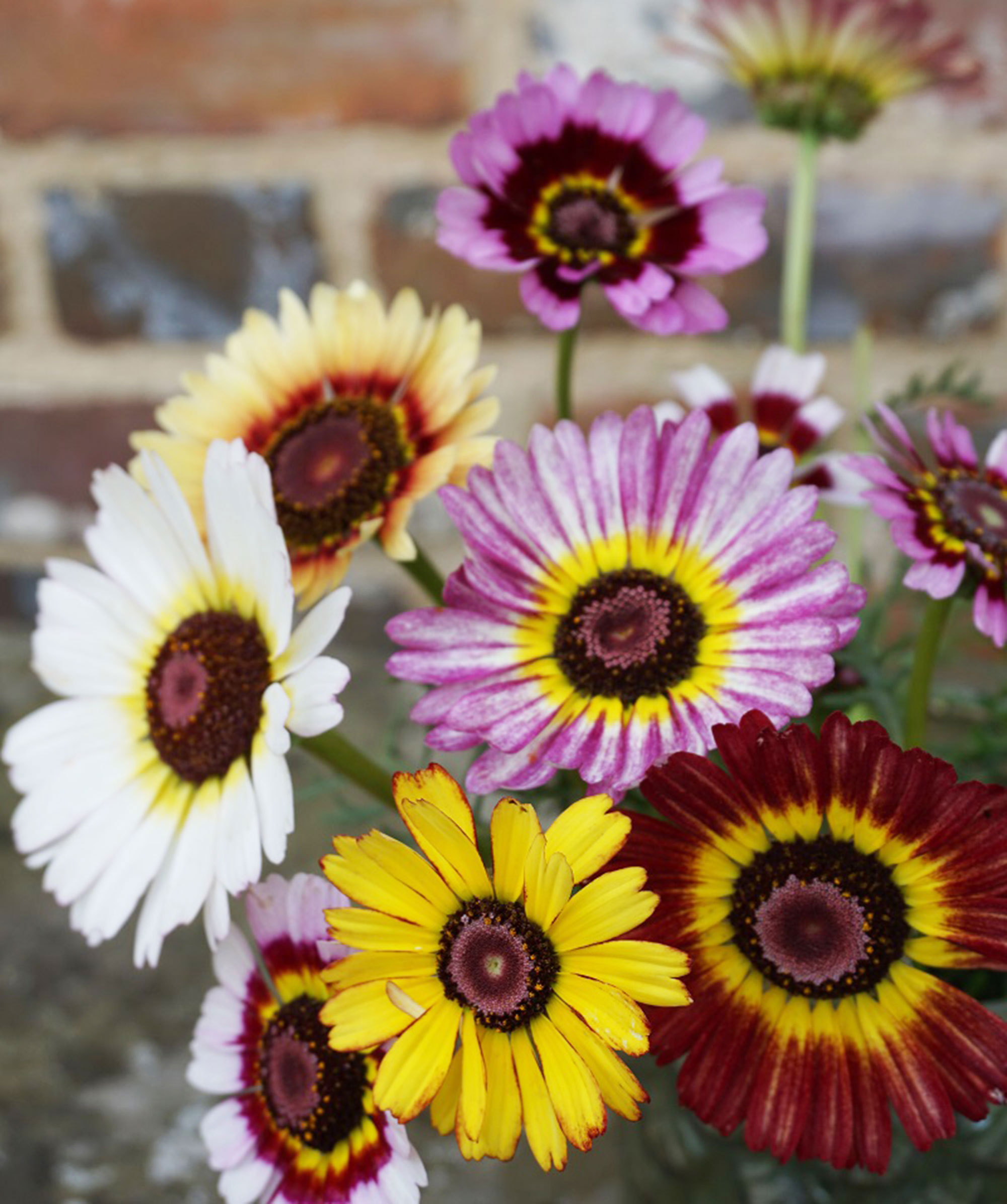
A very varied mix of single flowered plants, the deep purple eyes are surrounded by petals in a blend of hazy colors including white, cream, yellow, crimson and pink shades. Height: 60cm
3. Eastern Star
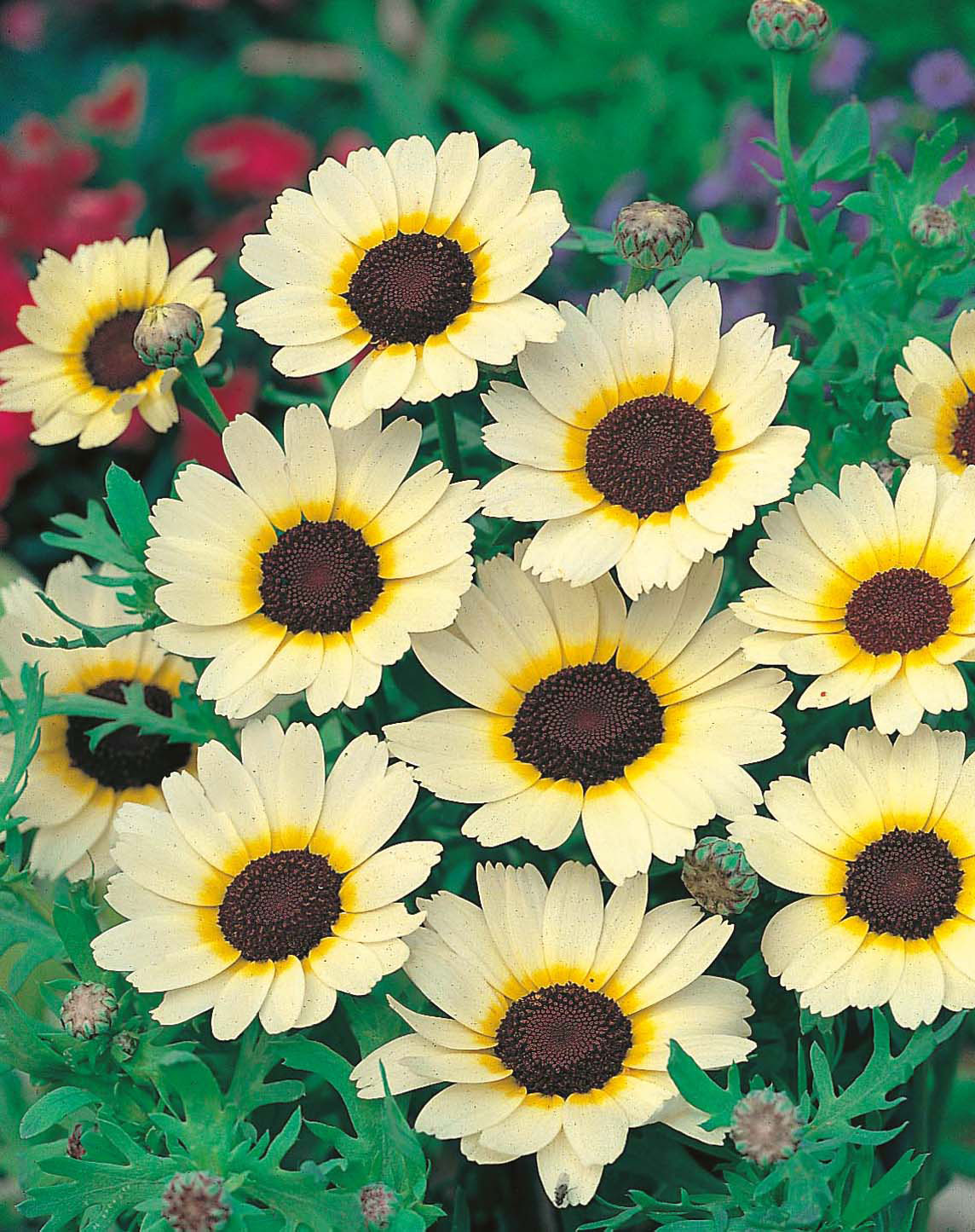
Pale, primrose yellow flowers, with a vibrant golden flash at the base of each petal, surround large purple eyes that become honeyed as they mature. Soft and beautiful and prolific. Height: 90cm
4. Polar Star
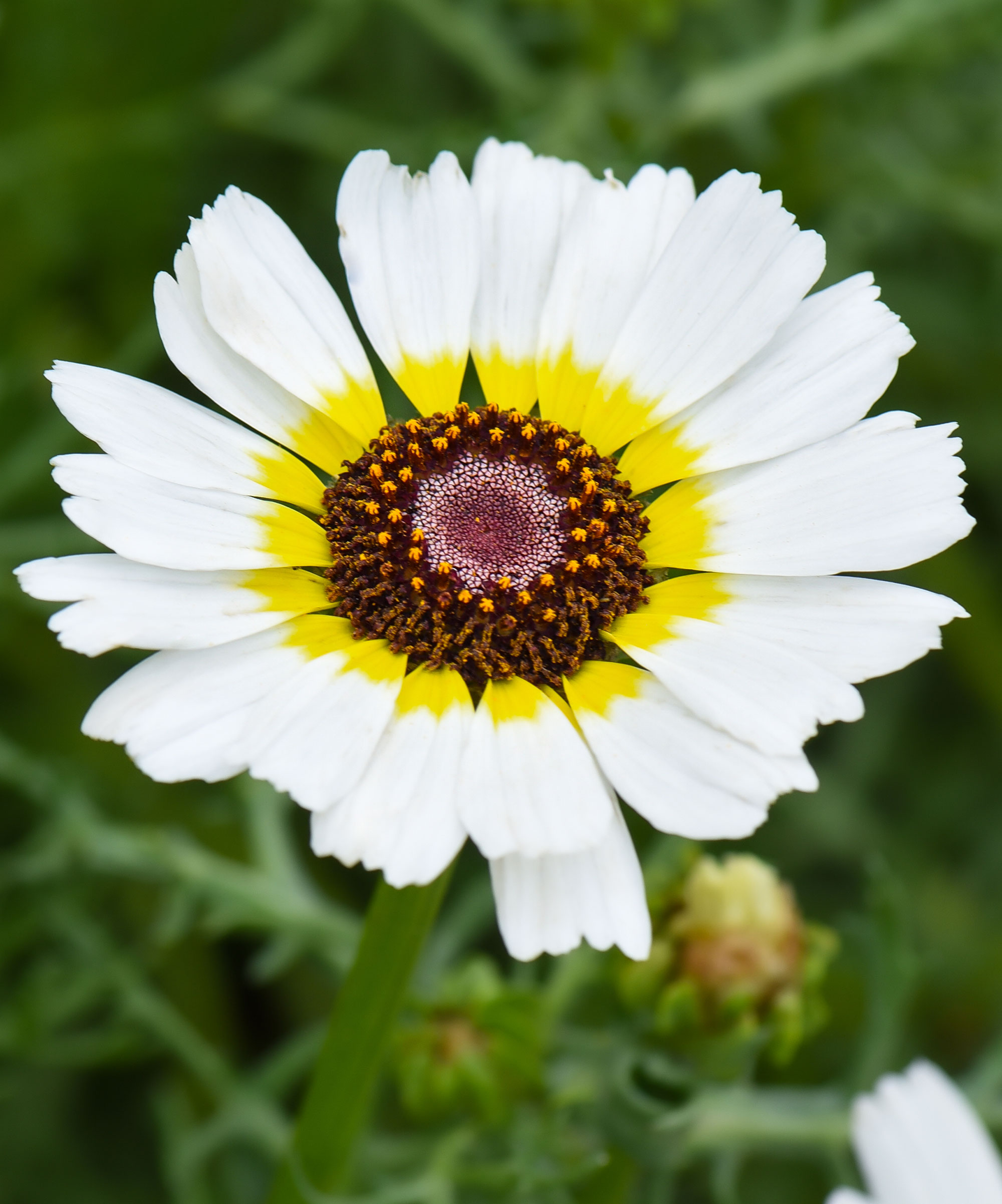
Simple and elegant, with long stems ideal for cutting, ‘Polar Star’ is a white version of ‘Eastern Star’, the pure white rays contrasting clearly with the purple centers and the bright yellow flash between the two. Height: 90cm.
5. Primrose Gem
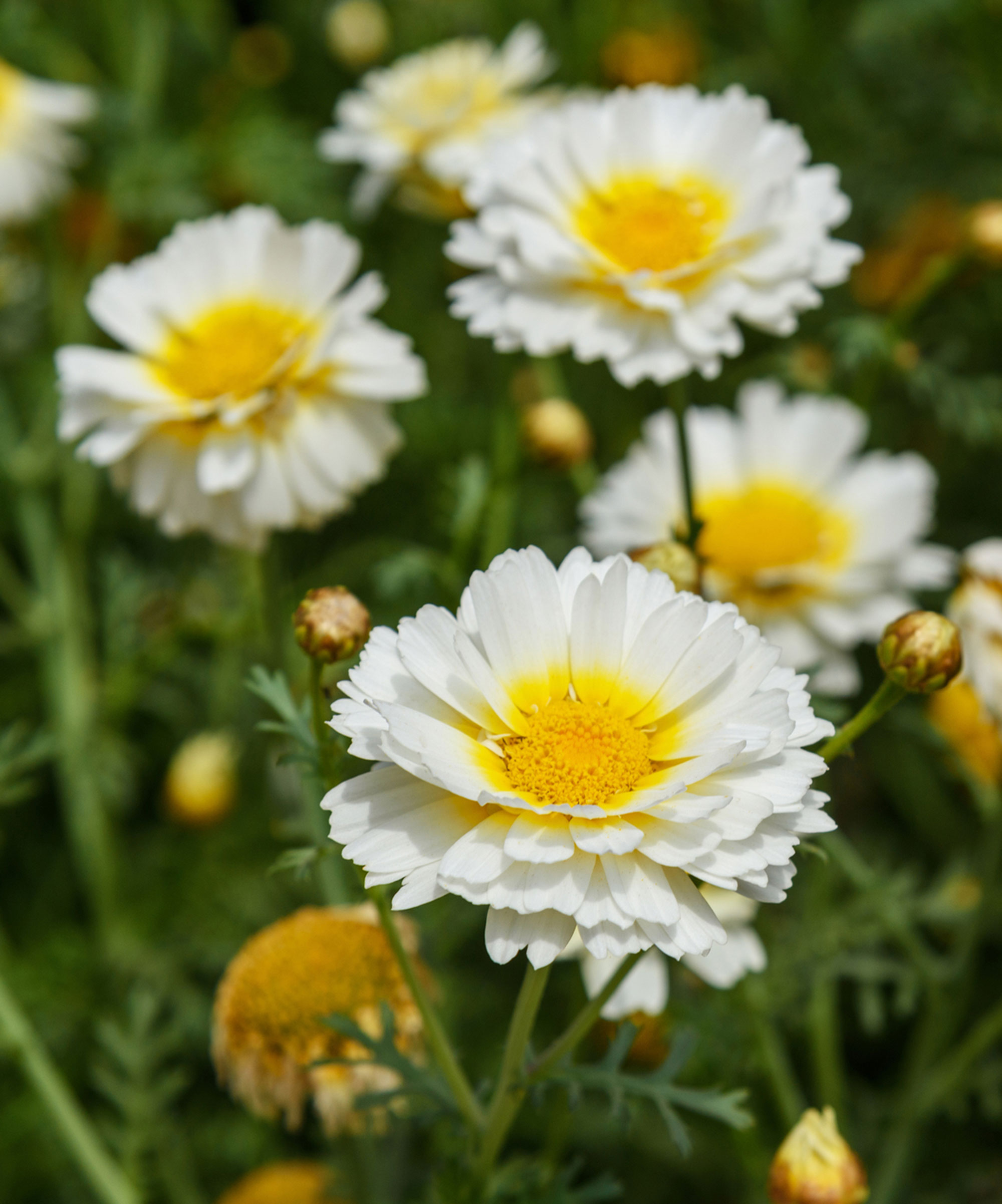
Small, mostly semi-double primrose yellow flowers feature a richer golden centre and all set against neat and finely dissected foliage. More compact and more bushy than other varieties and with prettier leaves (Height: 45m).
6. Rainbow Mix

A wide ranging mix of single flowers, the colours are especially bright and almost dazzling in the range of colours and bicolours. Quick to bloom, flowers in twelve or thirteen weeks from sowing outside. Height: 60cm.
What are marguerites?
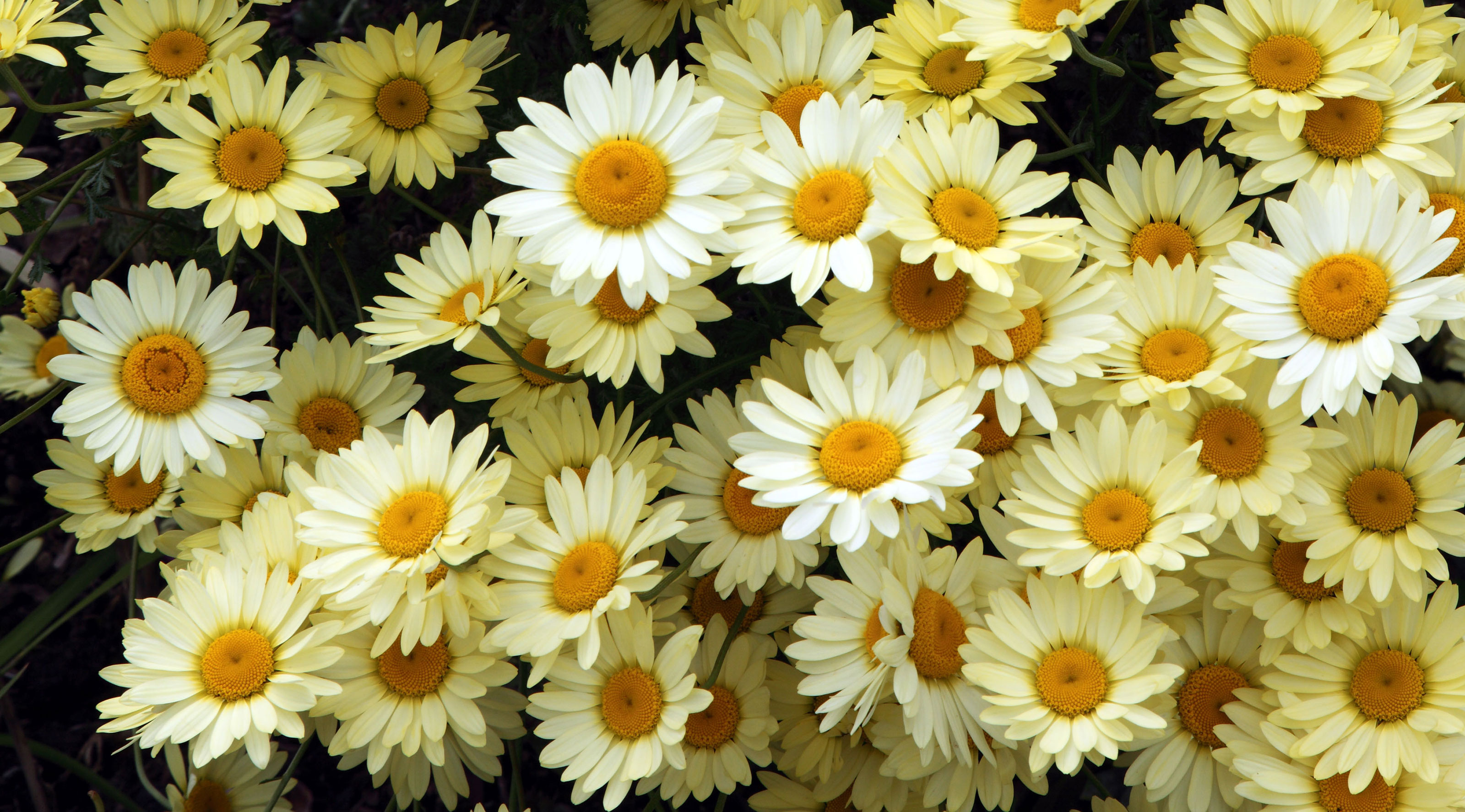
Marguerites are bushy, twiggy little shrubs that grow wild on the Canary Islands and Madeira. They're at their best as long flowering summer patio plants. Most will also flower right through the winter in a cool conservatory or they can be slipped into sunny borders among perennials.
3 classic marguerites to grow
1. Marguerite Chelsea Girl
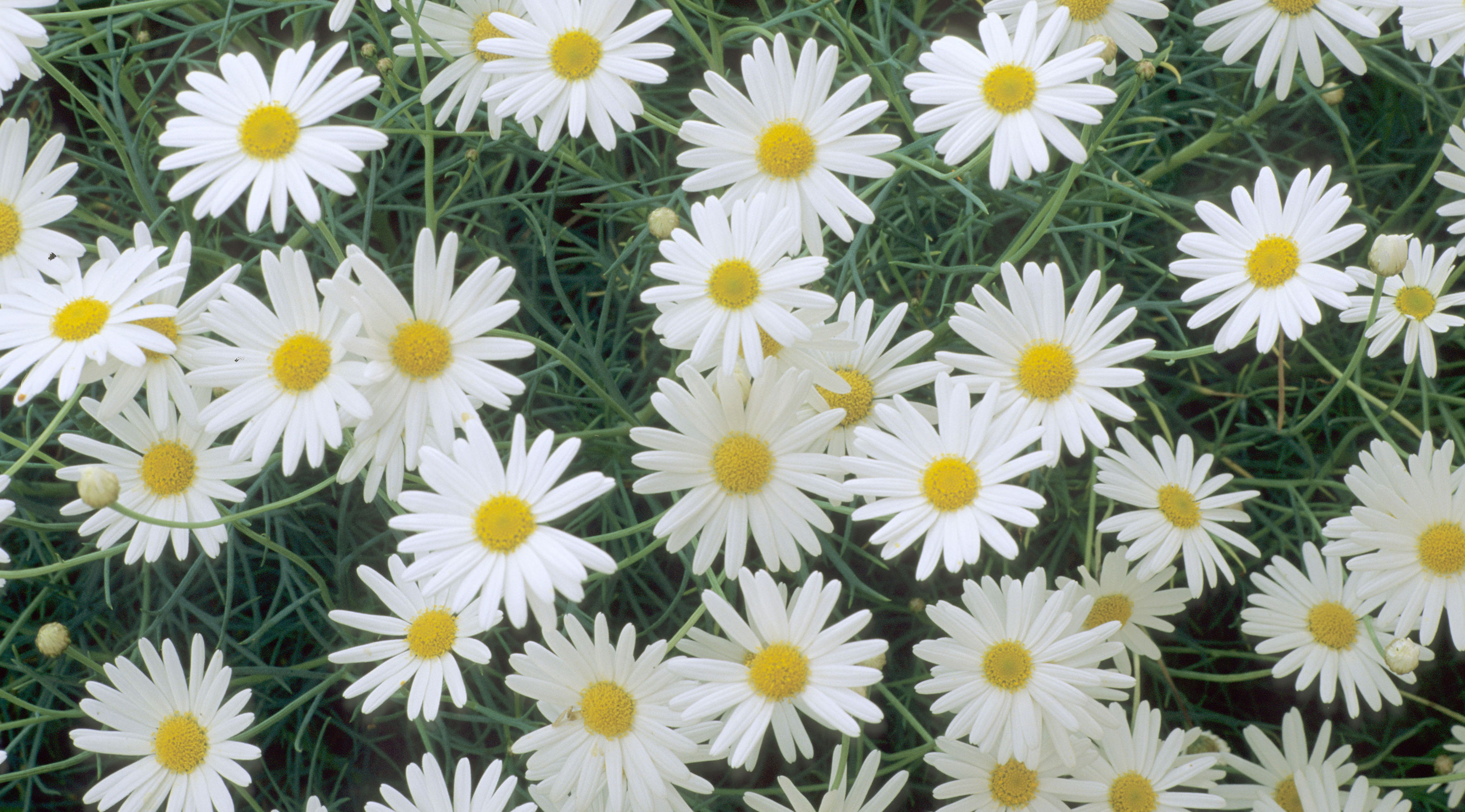
Grown mainly for its very finely dissected, blue grey foliage – rather like fennel in shape – as well as its white daisies. A valuable foliage plant for a sunny border or large container (Height: 50cm).
2. Marguerite Jamaica Primrose
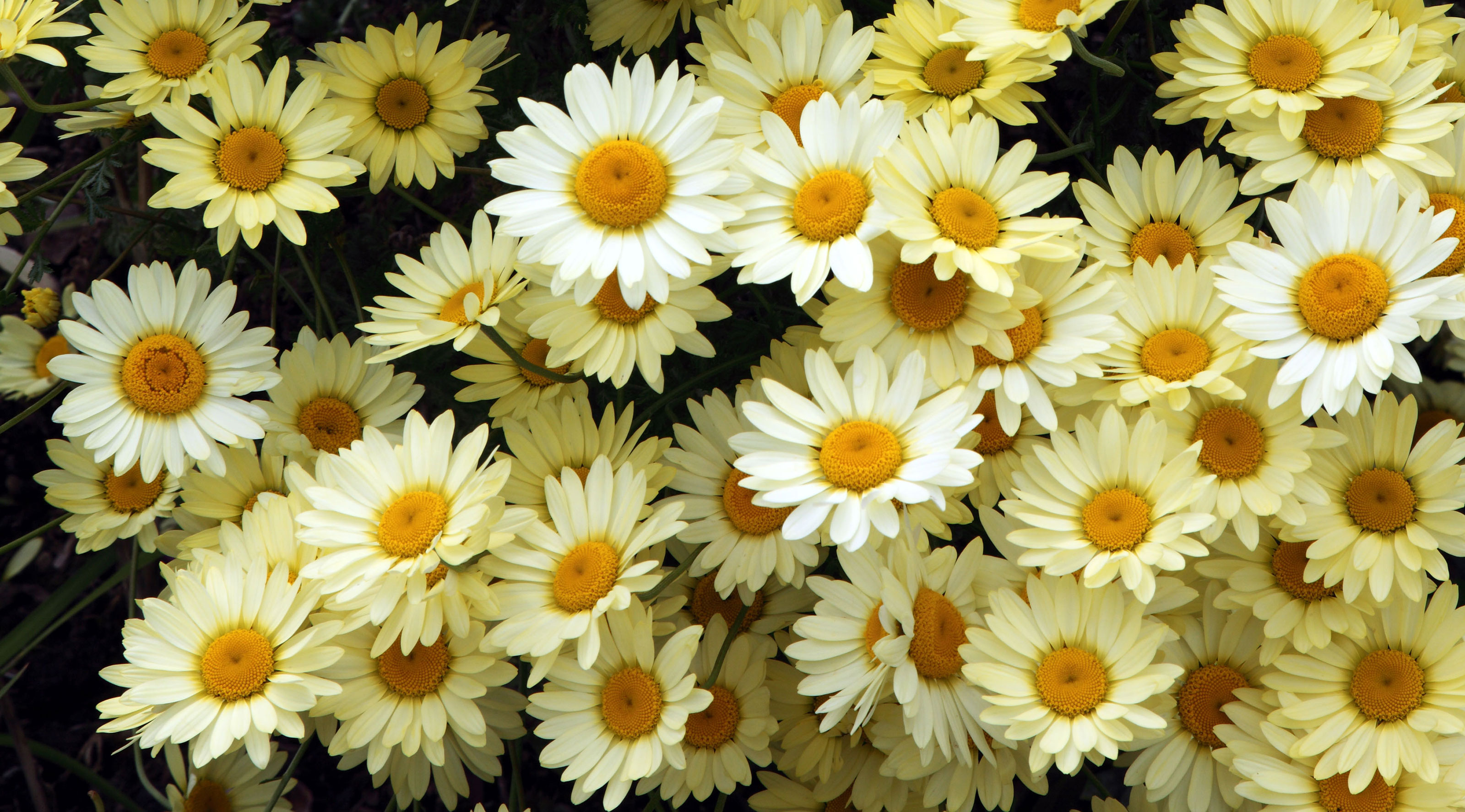
A plant with great presence and a long flowering season, the slightly greyish green leaves set off the prolific display of big buttery orange-eyed daisies from June until October. Height: 90cm.
3. Marguerite Vancouver
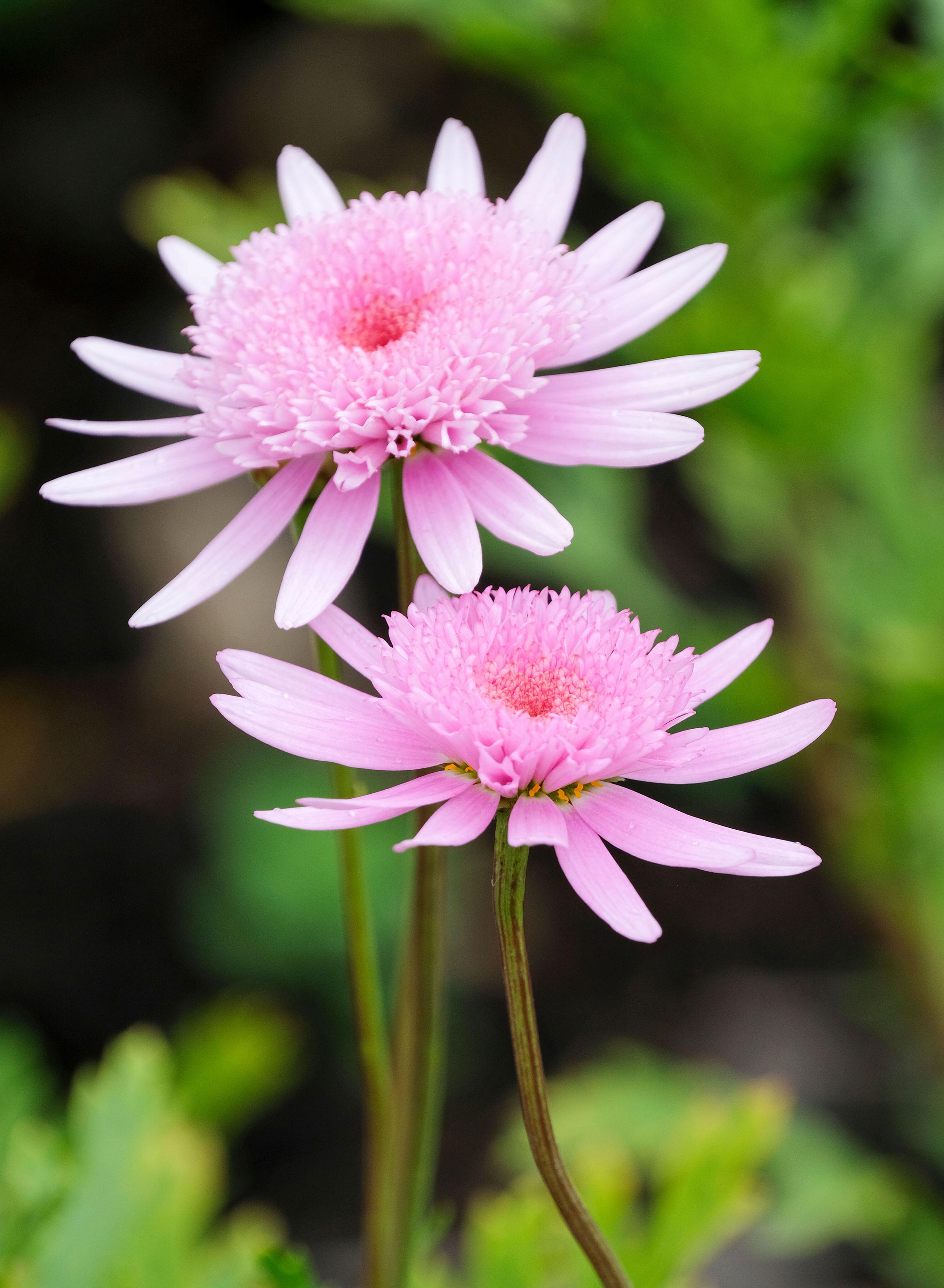
An anemone centerd variety, the pale pink ray petals surround a mound of darker pink. As the flowers mature they age from a rich rose pink to a paler salmony shade. Very pretty in posies. Height: 80cm.
Modern hybrid marguerites
1. Aramis Series
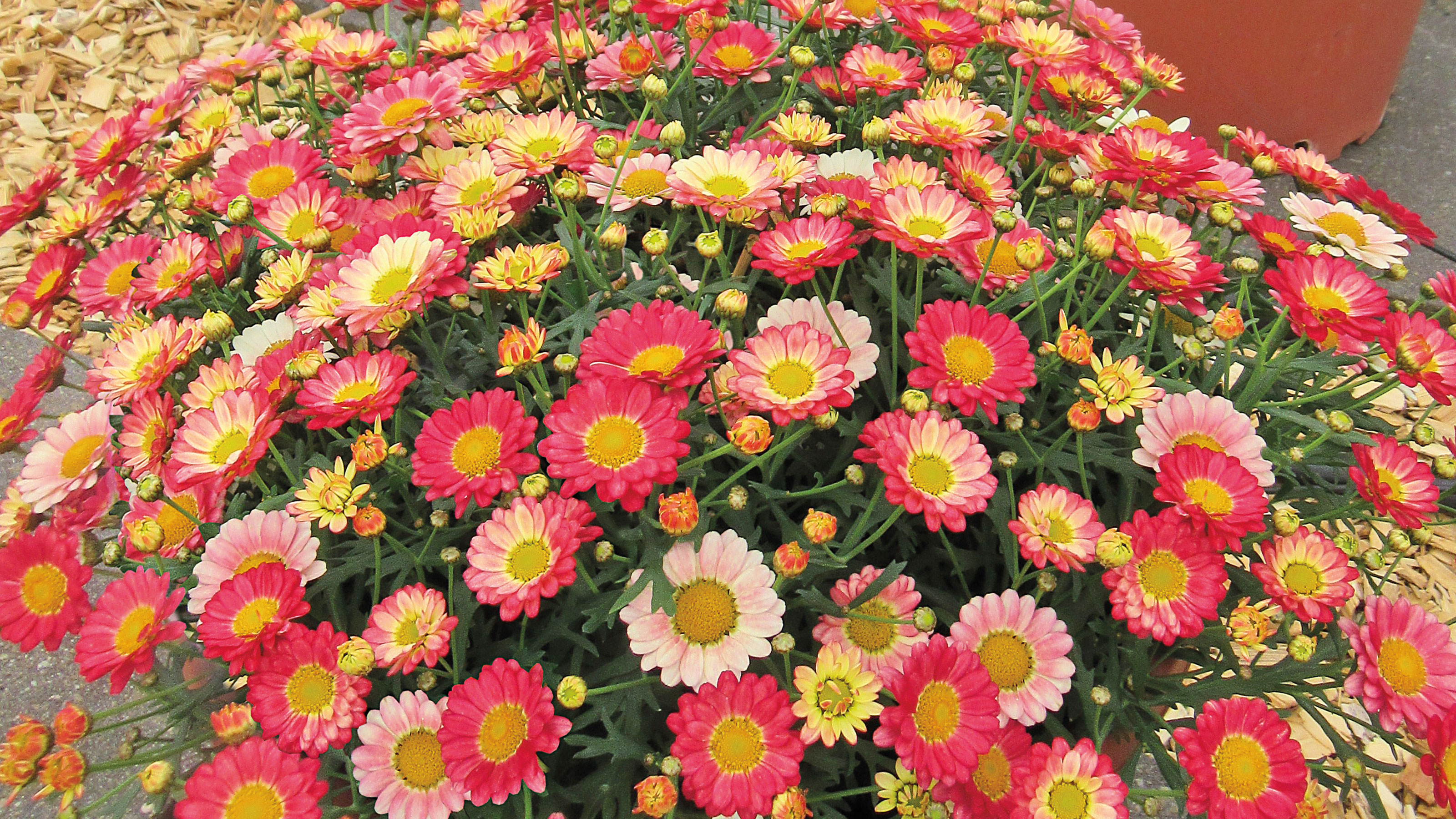
These are hybrids combining the bushy growth and fine foliage of argyranthemums with the wonderful colours of annual chrysanthemums. Look for the colour-changing ‘Aramis Apricot’. Height: 40cm.
2. Grandaisy Series
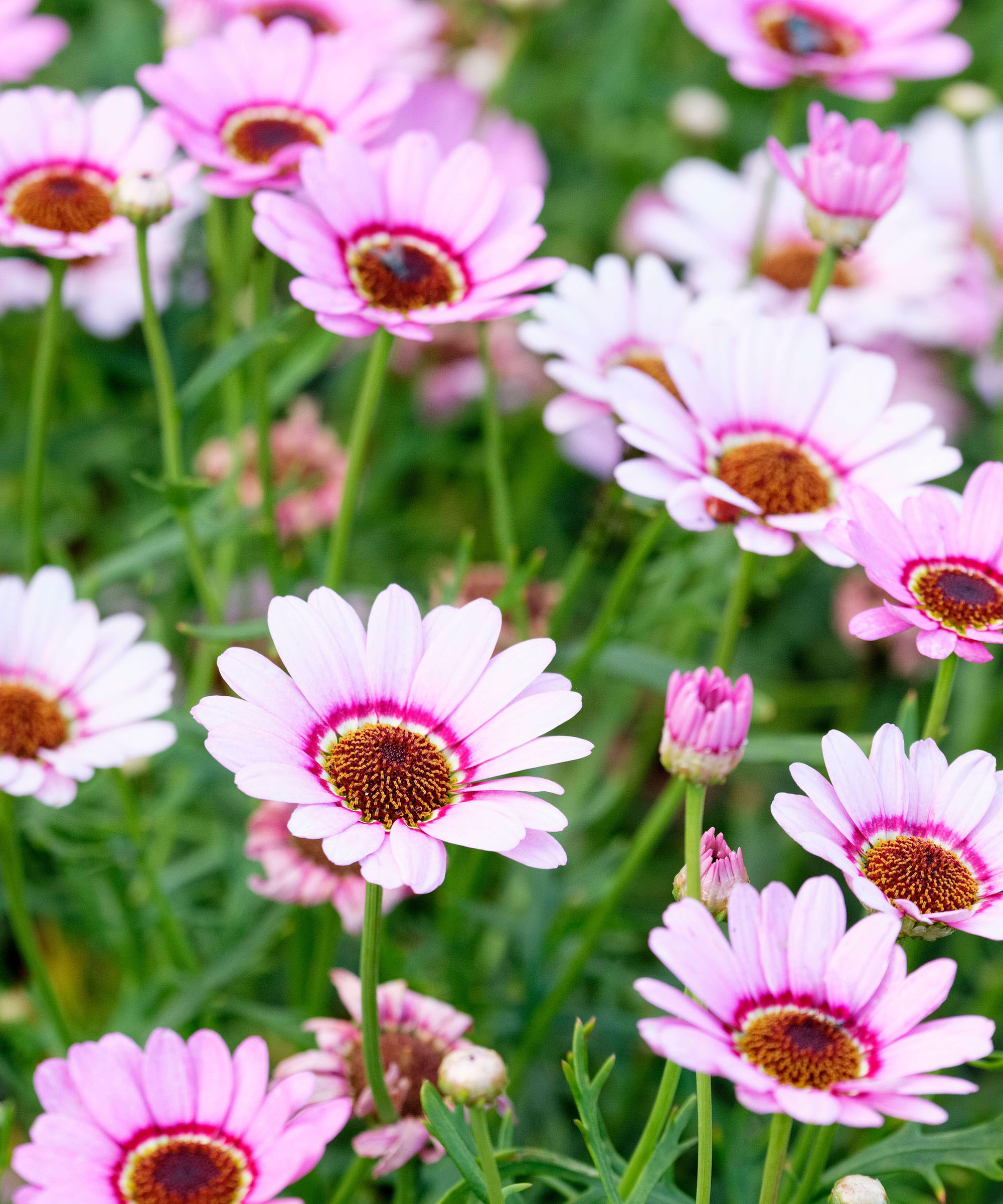
Amazingly prolific and in a range of wonderful colors, often with two or three colors in one flower, these are superb summer container plants that are bushy and long flowering. Look for 'Grandaisy Pink Halo'. Height: 45-60cm.
4 more members of the chrysanthemum family
1. Feverfew (Tanacetum)

Valuable for its aromatic foliage as well as its dainty white flowers, double white varieties bloom longest. Look for ‘Selma Star’ with its neat creamy buttons and short white petals. Height: 45-60cm.
2. Ox-eye daisy (Leucanthemum)
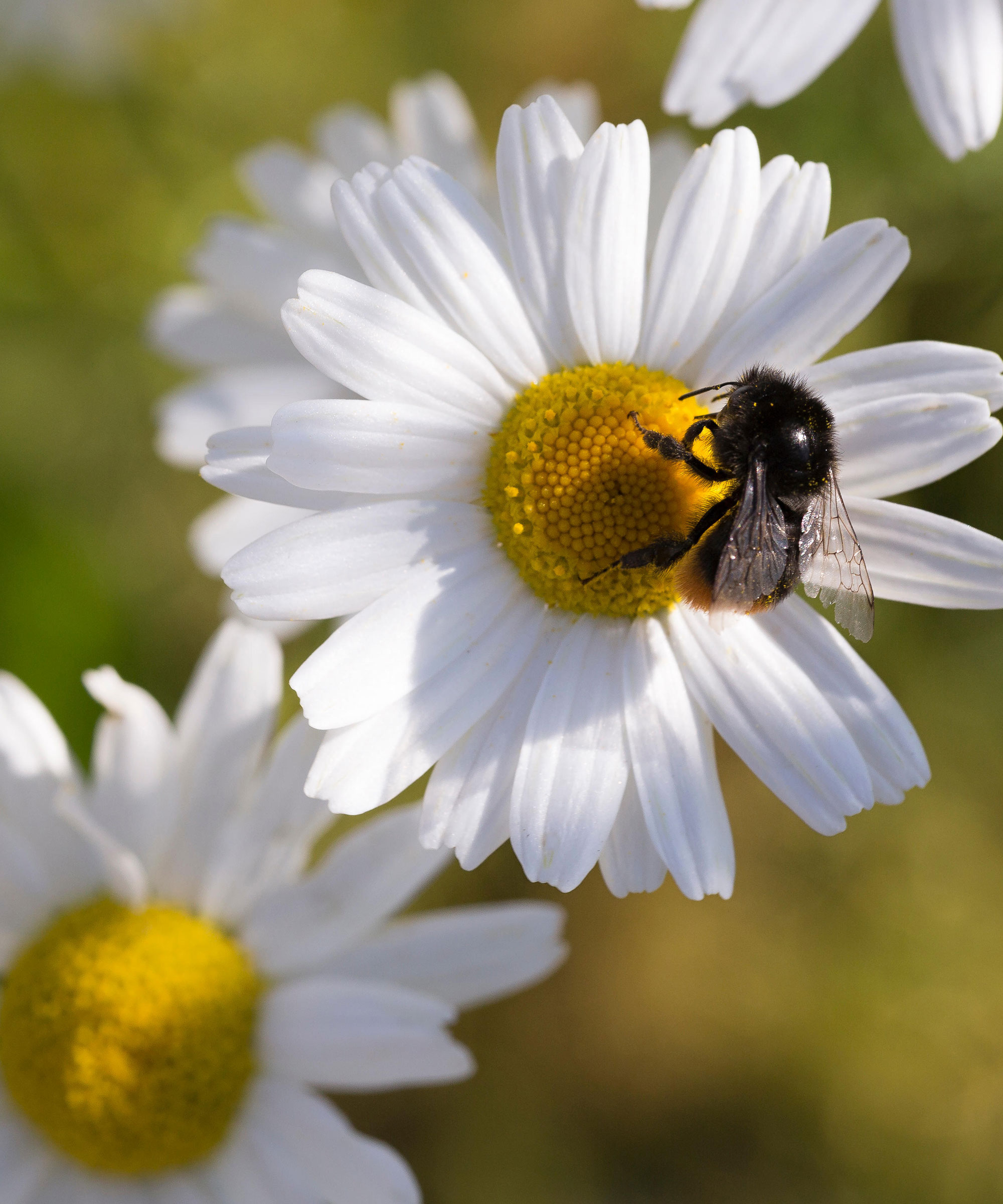
The wild ox-eye daisy proliferates along roadsides as it’s a vigorous constituent of the wild flower seed mixtures sown on verges. The yellow-eyed white daisies are much appreciated by pollinators. Height: 60-75cm.
3. Pyrethrum (Tanacetum)
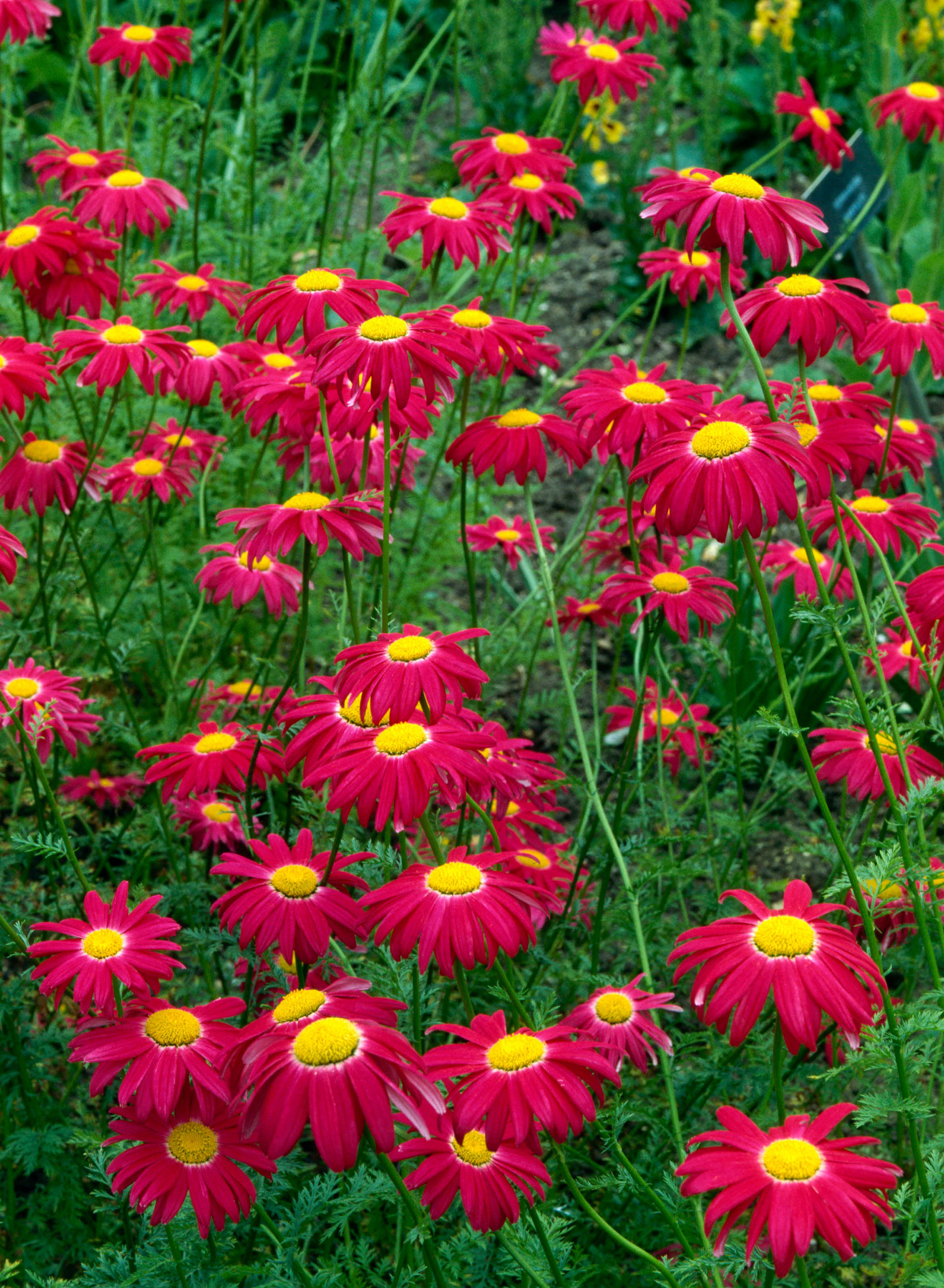
The single or double daisies in red or pink shades, plus white, make valuable summer perennials for sunny and well drained borders. Height: 50-75cm.
4. Shasta daisy (Leucanthemum)
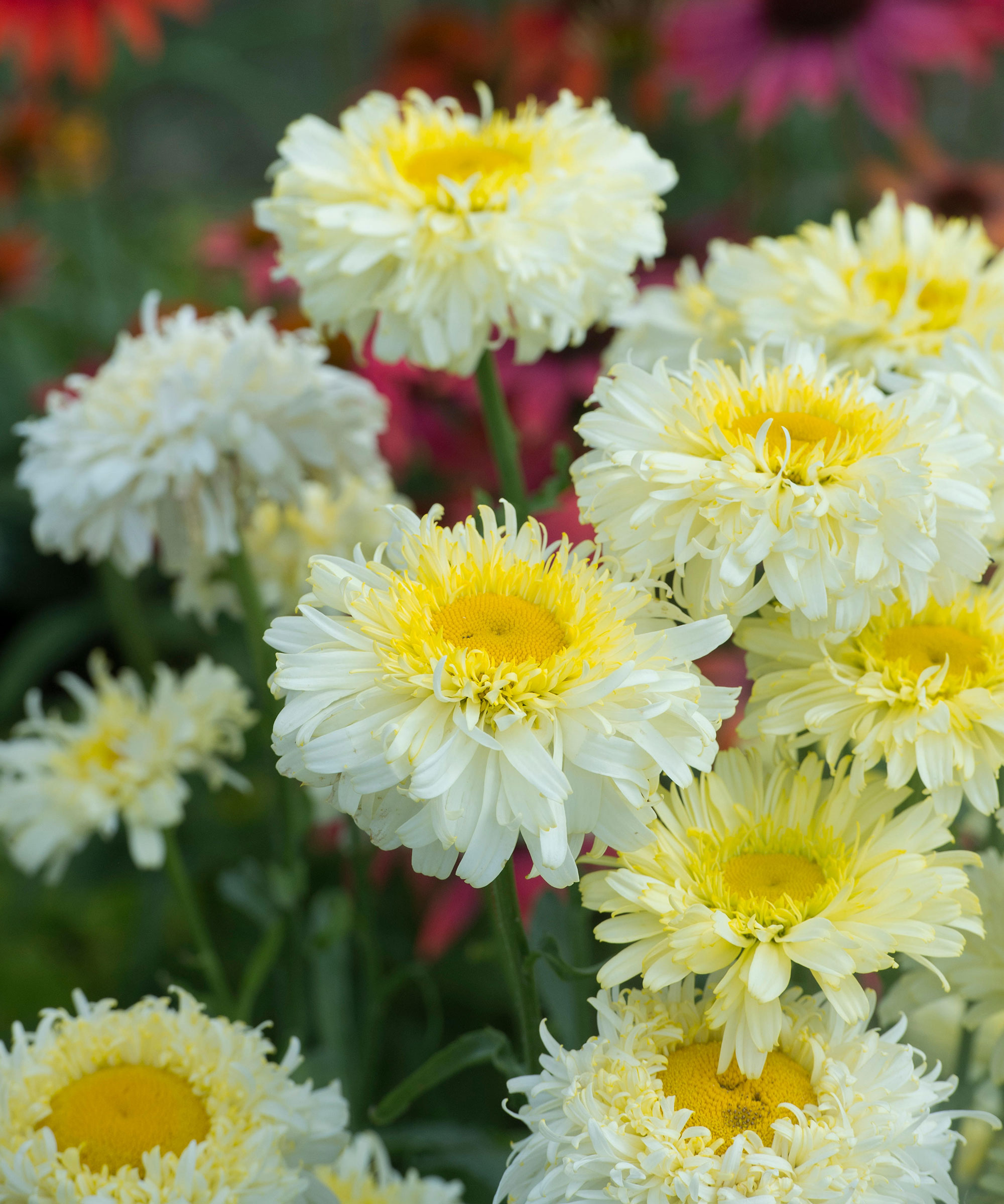
Like ox-eye daisies on steroids, modern varieties are stout, self-supporting in yellow and cream as well as white and in an increasing variety of flower forms. Look out for the Real Series. Height: 60cm.
Want more inspiration for your garden planting schemes? You'll find plenty of options in our best budget plants.
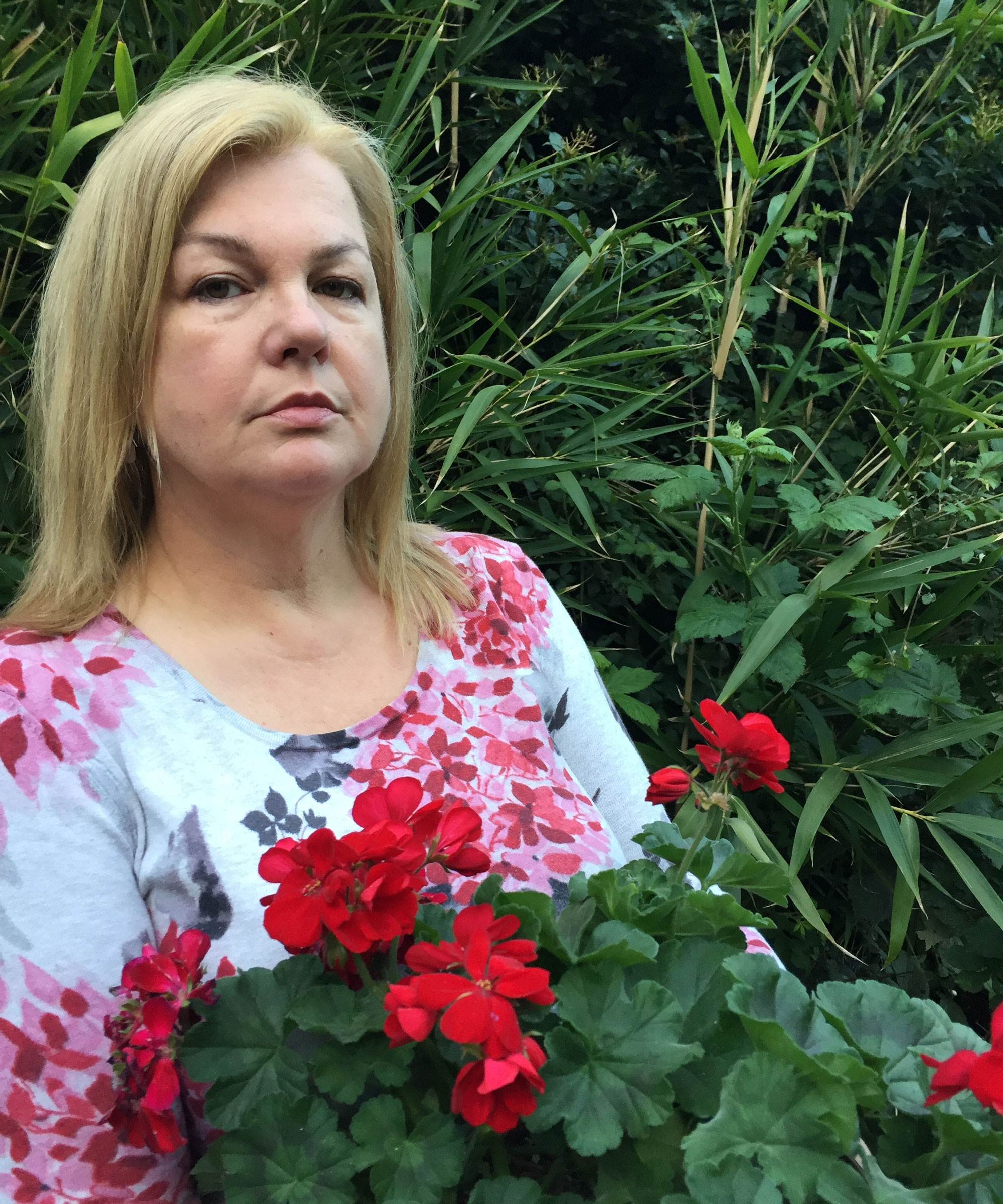
Lifestyle journalist Sarah Wilson has been writing about gardens since 2015. She's written for Gardeningetc.com, Livingetc, Homes & Gardens, Easy Gardens and Modern Gardens magazines. Having studied introductory garden and landscape design, she is currently putting the skills learned to good use in her own space where the dream is establishing a cutting garden.


